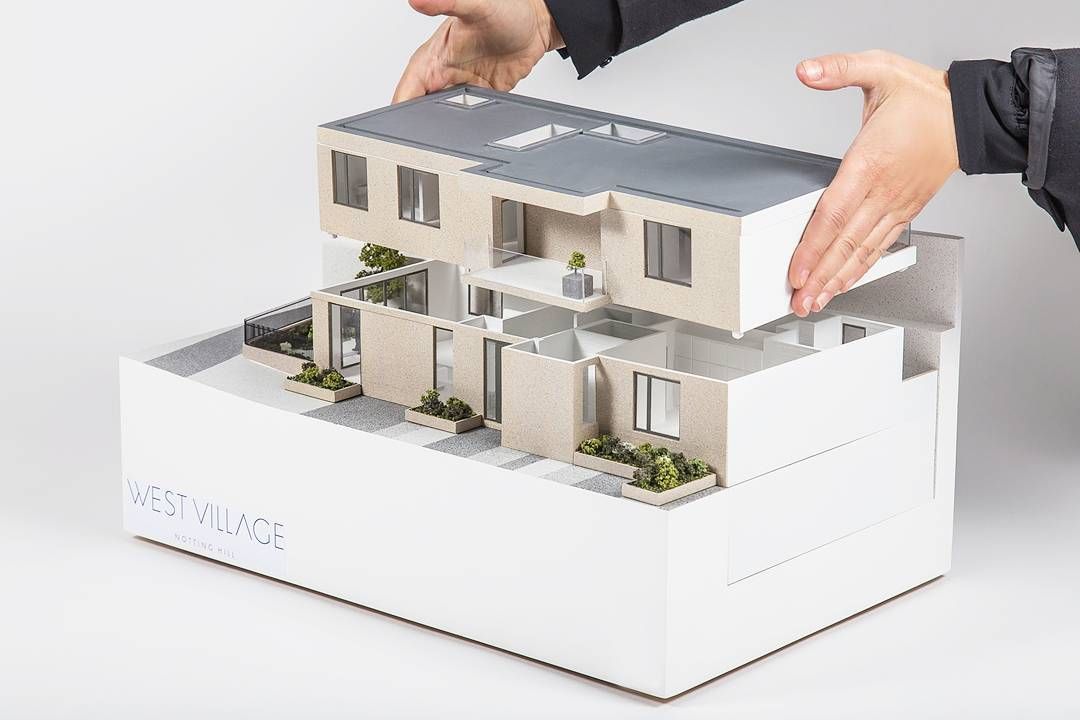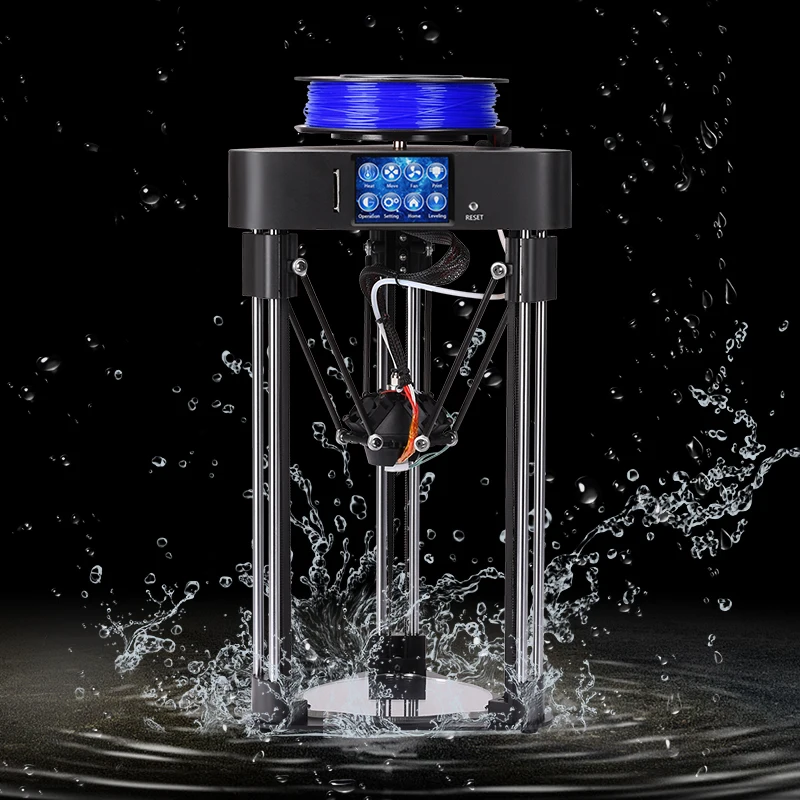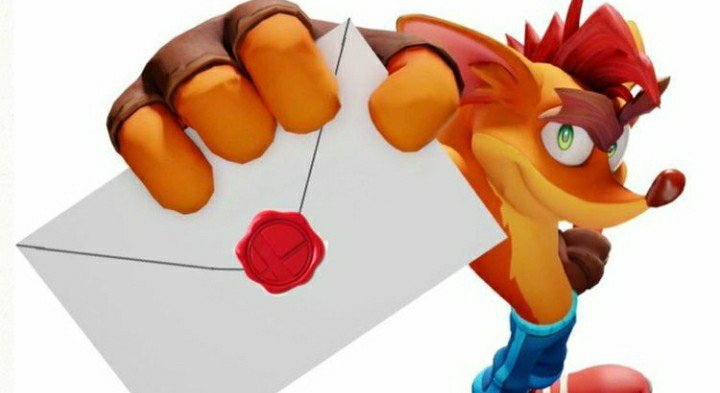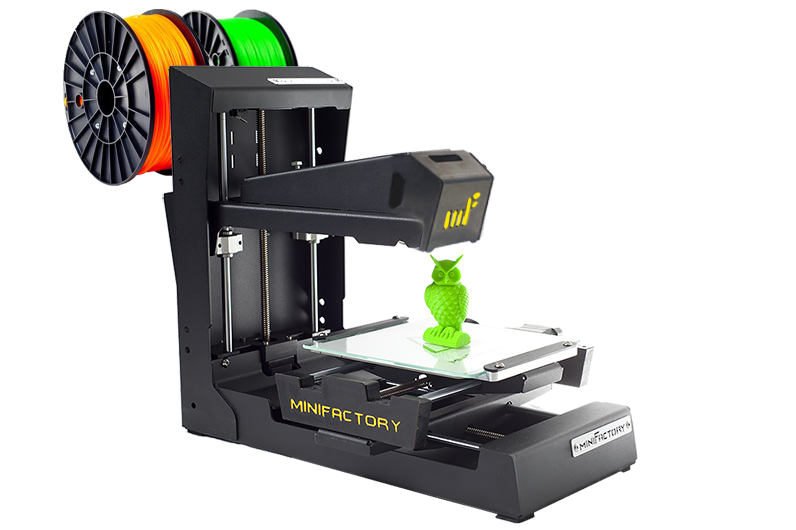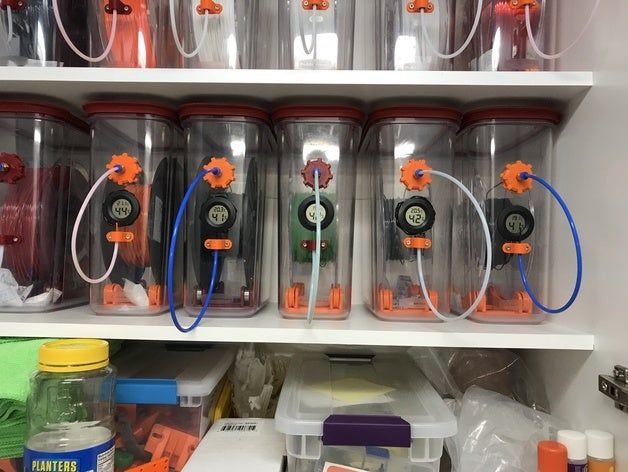3D house printing machine cost
3d Printing House Machine Cost in USA
Table of Contents
3D Printing a House is supposed to be easier to construct, more challenging, and more resistant to Florida threats such as mold, hurricanes, and flooding. Most importantly, they appear to be set to provide inexpensive housing in a state where many have forgotten such a thing exists.
Face masks, jewelry, jet engines, construction equipment, and even firearms are 3D printed products we’ve become accustomed to hearing about. It’s a method of using computer-generated designs to build a three-dimensional item layer by layer.
The 3D homebuilding procedure is similar, but the printer looks more like a big car wash than the ones becoming increasingly ubiquitous in offices. The printers are nearly two tons in weight, cost between $500,000 and $700,000, and are controlled by sophisticated computer algorithms. They feed instructions to racks that can be 10 feet long by 10 feet high or 100 feet long by 100 feet high. A spout is attached to the frames and moves back and forth over the site, directing the premixed cement. After that, the mixture hardens to form a concrete structure.
Is 3D printing the answer to affordable, sustainable, and efficient housing? Let us investigate.
Since people began stacking rocks to make shelters, house construction has remained relatively unchanged. The majority of houses still require teams of employees to hand-arrange layers of bricks or cinder block, hammer nails into timber frames, and adhere siding. This method relies mainly on individual talents and manual labor, generates a lot of waste and noise, takes a long time, and produces low output. In other words, it’s primed for upheaval.
With fewer workers, 3D printing construction promises to create houses faster, cheaper, and more correctly. Companies specializing in 3D construction claim that their materials will endure longer and are more durable than most traditional building materials.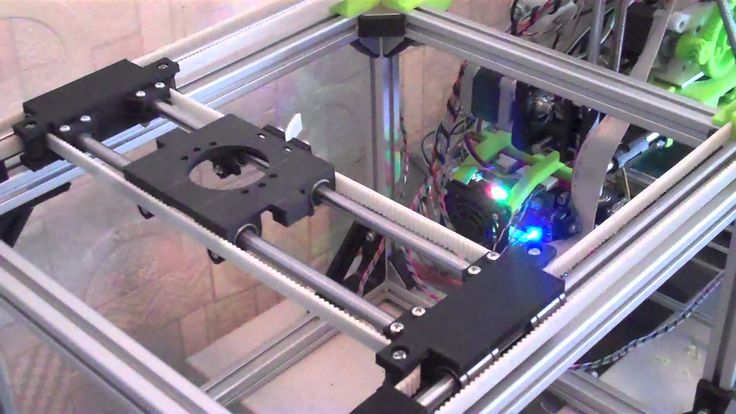 It’s no surprise that 3D printing building is gaining traction with benefits like these. Indeed, the worldwide construction robot market (which did not exist until recently) is expected to expand by nearly 20% in the next five years.
It’s no surprise that 3D printing building is gaining traction with benefits like these. Indeed, the worldwide construction robot market (which did not exist until recently) is expected to expand by nearly 20% in the next five years.
With the rise of 3D printed structures, you might ask who is producing them and why people buy them. Check it out.
3D Printing a House The Housing Market Will Never Be the Same Again
Skeptics continue to dispute the viability of 3D printed houses, but that opinion is fading with each new project. Engineers, project developers, and clients are trying to wrap their heads around this latest occurrence. Therefore, 3D printing construction businesses are in the spotlight today. After all, technology is still very young.
As innovations emerge from various global actors, there are no common standards for the procedures and materials employed. Many municipal building rules do not allow for 3D printed homes, but that is changing rapidly.
3D printing construction enterprises are helping to alleviate housing shortages and build much-needed structures in regions where building rules are broader or non-existent, such as school buildings in Africa, low-income housing in Mexico, and homeless shelters in Texas. In 2018, the construction firm ICON became the first in the United States to obtain a building permit and construct a 3D-printed home in Austin, Texas. The trend has spread to other cities.
In 2018, the construction firm ICON became the first in the United States to obtain a building permit and construct a 3D-printed home in Austin, Texas. The trend has spread to other cities.
3D Printing a House
When Will 3D Printing a House Be Available?
Only haus.me is selling 3D printed houses for the time being. These, however, are the premade variety.
Almost all other 3D construction printer manufacturers and service providers work on large-scale or high-profile projects where the municipality is either involved or has been for a long time to obtain construction licenses.
The most significant hurdle is government laws governing what can and cannot be used as a construction method. Government laws and building licenses differ dramatically around the world. But they all have in common public entities’ unwillingness to enable the general people to use cutting-edge technology at such an early stage.
Timeline, availability, location, and future expansion
Construction Governments, NGOs (non-governmental organizations), and commercial enterprises will employ 3D printing extensively in 2020 and beyond.
Homebuilder SQ4D announced the open market listing of the first 3D printed family home on Zillow.com between late November and early December 2021. The house, located in Riverhead, New York, features three bedrooms and two bathrooms and is priced slightly under $300,000.
The reasons range from maintaining leadership in cutting-edge technology, such as Dubai’s commitment to 3D printing at least 25% of all new structures by 2025 and beyond, to shorter construction timelines, such as KSA’s commitment to producing 1.5 million new private-sector residences by 2030.
One thing not appearing to be on the cards this year is the widespread availability of construction 3D printing services. While some pessimists believe it will be another decade before you and I can buy our own 3D printed house or hire a construction 3D printing contractor.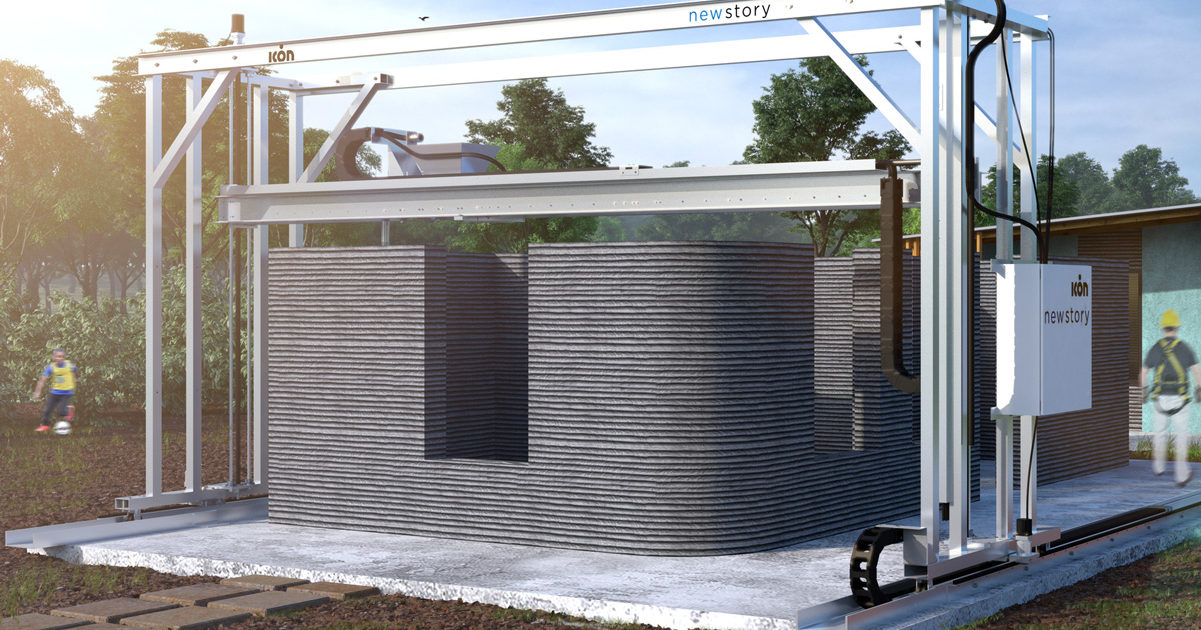 Similarly, we would like a traditional building contractor; others believe it will be sooner. However, based on previous and present forecasts, the development process could mature far sooner than expected.
Similarly, we would like a traditional building contractor; others believe it will be sooner. However, based on previous and present forecasts, the development process could mature far sooner than expected.
The major construction 3D printer manufacturers have already committed to offering their technology to several customers. COBOD, ICON, and a slew of more artists are among them.
The first commercial permit to build a 3D printed house in the United States has been granted to an Austin, Texas-based company, with construction slated to begin in February 2020.
The amount of customer enthusiasm and the low entry barrier for new and established engineering firms to embrace construction 3D printing technology as a strategy to combat skyrocketing housing and building costs is another crucial contributory element to believing in a shorter timeframe.
Start-ups are cropping up in places like India, Canada, the Middle East, China, and many European countries, making concrete 3D printing more viable while tailoring their bespoke technology to operate best with locally accessible materials.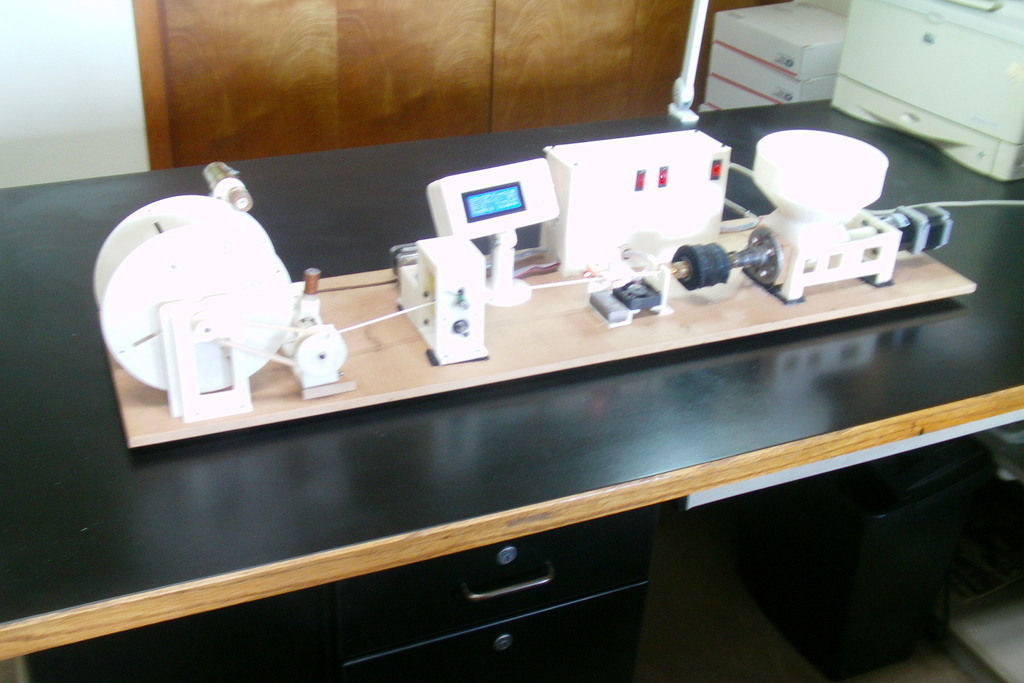
The first available property This year’s 3D printed houses in Eindhoven demonstrate how swiftly the industry wants to get to a stage where 3D printed houses are the standard rather than the exception.
Expect the developed world to offer ready-to-print house services, or at the absolute least, far more easily accessible building 3D printing services for the average home seeker, in five to six years.
3D Printing a House
Is 3D printing a house cheaper?
HomeAdvisor says the average cost of building a house in 2022 is $282,299. According to data from the US Census Bureau and the US Department of Housing and Urban Development, the amount is less than the median home sales price of $400,600 in the same month.
Is it, therefore, cheaper to build a home rather than purchase one? Certainly not. The cost of constructing a custom home varies greatly depending on your choices, the building materials you select, labor prices, and even where you live in the country.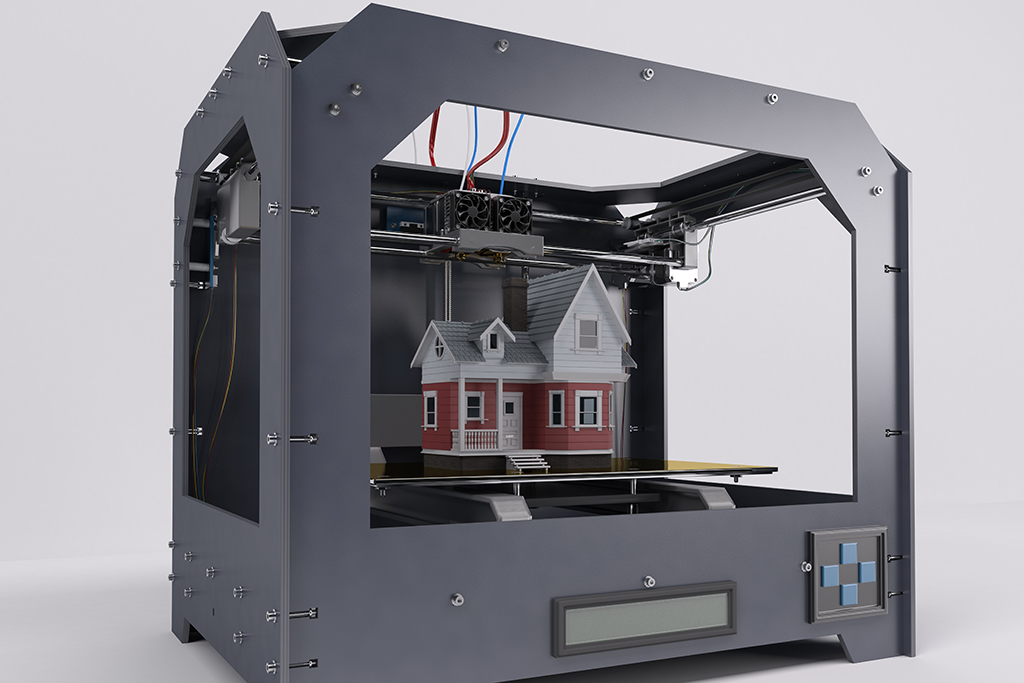 Although the average home costs $282,299, most homeowners spend $114,209 and $450,824 on construction. Remember that you must also purchase and prepare the ground on which the house will be built.
Although the average home costs $282,299, most homeowners spend $114,209 and $450,824 on construction. Remember that you must also purchase and prepare the ground on which the house will be built.
| National Average | $282,299 |
| Minimum (800 square feet) | $80,000 |
| Maximum (5,000 square feet) | $1,000,000 |
| Average Range | $114,209 – $450,824 |
Source: HomeAdvisor
Average Cost To Build Per Number Of Bedrooms| Bedroom Count | Average Cost |
| 1 | $80,000 – $400,000 |
| 2 | $100,000 – $480,000 |
| 3 | $150,000 – $800,000 |
| 4 | $200,000 – $1,000,000 |
Source: Fixr
3D Printing a House
How much does a 3D printer to build houses cost?Let’s break down the various processes that make up the home construction process and how much each typically costs.![]() Remember that these prices can change depending on land, materials, and labor demand. For example, due to strong demand during the COVID-19 epidemic, building material costs have risen by 5% to 10% in 2021 alone.
Remember that these prices can change depending on land, materials, and labor demand. For example, due to strong demand during the COVID-19 epidemic, building material costs have risen by 5% to 10% in 2021 alone.
You need land to build a house before you can make it. You’ll need to buy a piece of property and get it cleared. This could entail tree removal and land leveling.
The cost of purchasing an empty lot will vary depending on several factors, including the lot’s size and location. HomeAdvisor says the average price of land is $76,500, with undeveloped land in rural areas going for as cheap as $3,000. Before breaking ground on construction, you should budget between $1,500 and $3,000 for land preparation.
How much does a 3D printer to build houses cost?Planning and obtaining permits ($7,200)
Your general contractor and subcontractors will begin planning to build the house once you have your land. This stage entails hiring an architect to create floor plans and obtaining all relevant permits.
This stage entails hiring an architect to create floor plans and obtaining all relevant permits.
House plans cost roughly $5,000 on average. Still, the exact price will depend on how simple or complex your home will be and what types of building licenses and preliminary inspections you will require. Building permit requirements vary by location, but typically cost roughly $2,200.
How much does a 3D printer to build houses cost?Preparing And Laying The Groundwork ($14,500)
It’s finally time to break ground after completing all the preparation work. A crew will arrive and begin digging a foundation for your home.
The concrete will then be poured according to your foundation type: slab, crawl space, or basement. The cheapest foundation is usually a concrete slab, followed by a more expensive crawl space, and finally, the most costly basement foundation.
Your budget and preferences will determine which foundation you use.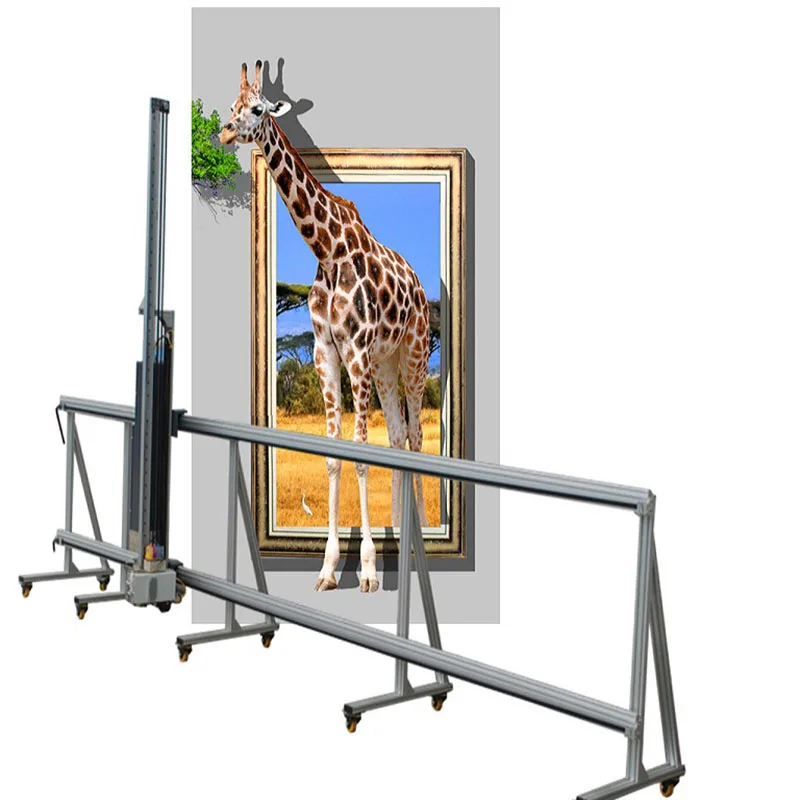 Each variety has advantages and disadvantages, so do your homework.
Each variety has advantages and disadvantages, so do your homework.
The average cost of preparing and constructing your foundation is $14,500.
How much does a 3D printer to build houses cost?The Home’s Framing ($35,000)
Following that is framing. Consider this phase as the foundation of your home. Floors and the walls will be frame d, elevated, and clad in plywood or oriented strand board. The roof trusses are then constructed and installed on top of the wall frames.
Overall, depending on the size and floor design, this process will cost between $20,000 and $50,000, with an average of $35,000.
How much does a 3D printer to build houses cost?External Elements Installation ($50,000)
The necessary external features of the walls, roofing, and openings will be installed after the skeleton is completed. This means the siding will be installed on the walls, windows, and doors. Finally, the roof will be encased – covered in roofing felt and nailed-on shingles. This will cost roughly $50,000 in total.
Finally, the roof will be encased – covered in roofing felt and nailed-on shingles. This will cost roughly $50,000 in total.
Plumbing and electrical installation ($52,500)
It’s time to put in all essential systems that keep your house running smoothly with water, air, and power. Plumbing and HVAC systems will be installed now, and an electrician will wire your home and link you to the electrical grid.
No fixtures will be installed; all behind-the-scenes elements, such as pipes and ducts, will be installed. The average cost of a major system installation is $52,500.
How much does a 3D printer to build houses cost?Finishing the interior ($112,500)
The interior finishes come next. This includes installing insulation, drywall, flooring, internal doors, and other fundamental elements to make the newly built building a living dwelling. Walls will be painted, cabinets and worktops will be installed, and appliances connected.
Walls will be painted, cabinets and worktops will be installed, and appliances connected.
The construction of your home will be almost complete once this step is completed. This is likely one of the most costly aspects of the construction process, and your unique tastes will determine the actual cost. Interior finishes cost an average of $112,500, but they can cost much more if you have a costly taste.
How much does a 3D printer to build houses cost?Adding Finishing Touches ($20,000)
Any other improvements to your property, such as external constructions such as a deck or patio, a driveway, or landscaping, are included in the final phase. These projects can be undertaken during the home construction and some of the above processes. Of course, any modifications to your home will increase the overall project cost. Fencing around your yard, for example, will cost between $2,000 and $5,000, and driveway paving will cost roughly $6,600.
Worksites will be cleaned up, and all relevant inspections will be conducted after completing everything. This might cost up to $20,000.
Companies That 3D Print a House
Companies That 3D Print a House
ICONIcon creates robotics, software, and building materials in Texas. The company raised millions to expand its technologies by starting with charity-backed programs to build homes in impoverished communities. Icon is partnering with NASA on lunar habitat construction methods while expanding to larger American homes.
The Vulcan II construction 3D printer provides more robust, cheaper buildings with more design freedom. Vulcan II has a 6450-square-foot printing capacity (600 square meters).
Vulcans can build a home in 24 hours using Icon’s Lavacrete. Austin, Texas, erected the first Icon house in 2018. Since then, the business has built a homeless community in Austin alongside Mobil Loaves & Fishes. Community First! The village house is 400-square-foot and has a bedroom.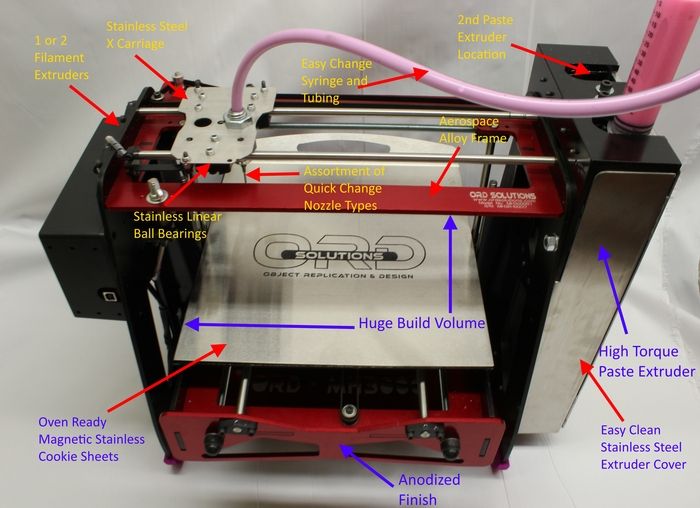
Companies That 3D Print a House
Peri 3D Construction
Peri is a German building company. It’s a world-leading formwork and scaffolding maker. The family-owned business recently saw the writing on the wall and collaborated on 3D printing projects with Danish technology partner COBOD, making concrete 3D printers. PERI acquired COBOD in 2018.
Peri opened Germany’s first printing house in 2021. Printing commenced on September 17, 2020, utilizing a COBOD BOD2 concrete printer and HeidelbergCement’s “i.tech 3D” printing mortar.
Peri started producing a 3D-printed house in Tempe, Arizona, in June 2021. First, it’s a Habitat for Humanity project, the world’s largest non-profit home constructor. Second, the house isn’t a prototype. Habitat for Humanity has pledged to print the house for a low-income beneficiary.
The 1,738 square-foot Tempe home will be a hybrid form with traditional construction and 3D printing. The 3D-printed home will be 80% complete.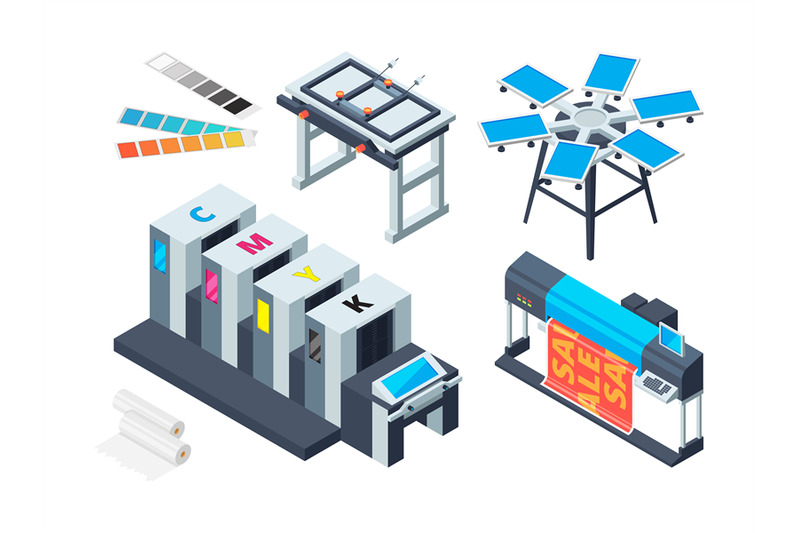 Construction often slows in the hot Arizona summer, so the COBOD printers may prove useful.
Construction often slows in the hot Arizona summer, so the COBOD printers may prove useful.
Companies That 3D Print a House
Apis Cor
Apis Cor’s technology can print an entire building (walls and structures) on-site. They want to construct autonomous machines that can print on Earth and beyond.
The company is so confident in 3D printing homes that it opened a showroom in Florida.
Their 3D printing process can print an entire house in 24 hours. The 30-minute setup includes a portable 3D printer and a “mobile automated mix and supply unit.” Apis Cor’s 132-m2 3D printer builds layers of walls with mixed concrete. It can be mounted on any surface with less than a 10 cm height difference. Most printers need a flat, level concrete base.
Apis Cor built a 3D house in 24 hours in 2017. Apis Cor used dry insulation on one half of the house and polyurethane filler on the other to adapt to Russian weather.
Apis Cor and SEArch+Team won Construction Level 1 and Virtual Design Level 1. NASA’s “3D Printed Habitat Challenge” included Apis Cor. The goal was to utilize additive technologies to build a habitat using local materials.
NASA’s “3D Printed Habitat Challenge” included Apis Cor. The goal was to utilize additive technologies to build a habitat using local materials.
Apis Cor believes it can alleviate the affordable housing dilemma if its technology is enhanced. Apis Cor’s equipment is self-contained. This is the best way to expand globally.
Extrudable concrete contains sand, cement, geopolymers, and fibers. They combined 3D printing materials. In a huge hopper, all materials are combined. Pumps deliver the mixture to the extruder.
On-site robotic arm printers 3D print structural components. The 3d-printed house interior and exterior walls were slightly apart.
Fiberglass reinforcements were added. Polyurethane was used to insulate gaps. After printing the walls, a crane removed the printer so windows, appliances, and a roof could be fitted.
Companies That 3D Print a House
Winsun (Yingchuang Building Technique)
Winsun, a 3D printing pioneer, created ten houses in one day in 2014. Since then, Winsun has printed a stunning office in Dubai in 2016. They’ve sold 100 homes in China. According to the company, a $4,800 standard house can be built daily.
Since then, Winsun has printed a stunning office in Dubai in 2016. They’ve sold 100 homes in China. According to the company, a $4,800 standard house can be built daily.
Winsun is aware of 3D printing concerns in building. The company is constructing complex prototypes. Winsun plans to build a 100-meter-tall, 2.1 million-square-foot structure near Shanghai to demonstrate 3D printing for high-rise construction.
Customers can examine prototypes outside Winsun’s main factory, including a 6-story house.
Their printer builds walls layer-by-layer with sand, cement, and fibers. Their printer doesn’t work on-site; they manufacture the barriers in their factory and transfer them to the job site.
They devised their own material mix for the green printer and produced no garbage.
Companies That 3D Print a House
CyBe Construction
CyBe Construction seeks to transform 3D-printed concrete. As part of the Sheikh’s 3D printing program, they were picked.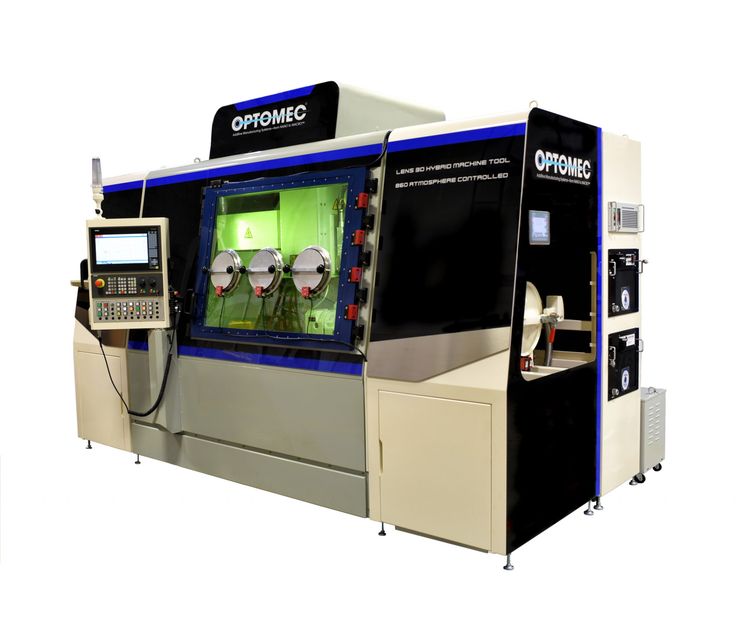
The business owns the CyBe R 3Dp, the CyBe RC 3Dp, and a mortar. The 200 mm/s printers can create huge structures in 20 minutes, but they need two operators.
The RC is a rubber-wheeled mobile printer. CyBe recommends this printer for abutments, floors, walls, formwork, and sewer trenches.
CyBe previously completed a 168-square-meter drone R&D lab in Dubai. Three weeks were spent printing the lab on-site with a mobile 3D printer.
Companies That 3D Print a House
Mighty Buildings
Oakland-based Mighty Buildings develops building technology. The 3D printed house company manufactures modular, pre-fab homes and “accessory dwelling units” using 3D printing, robots, and automation. 3D printing creates building components faster than traditional construction, the company said. Using Light Stone Substance, its 3D printers (LSM). This UV-hardening thermoset composite is a useful building material. The Mighty Building factory does all the work.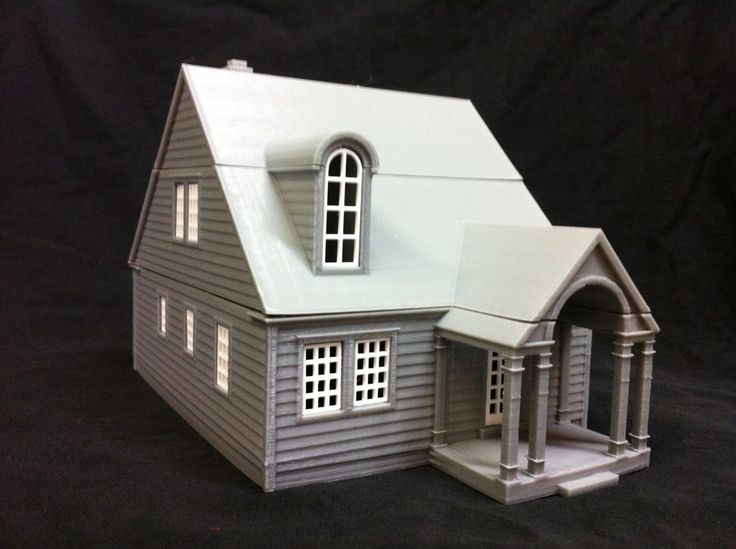 Then, the pieces are sent to the construction site in California.
Then, the pieces are sent to the construction site in California.
Palari Group develops sustainably. Mighty Buildings have created the world’s first 3D printed zero net energy neighborhood in Rancho Mirage, California’s Coachella Valley. According to rumors, investors have already pledged $70 million.
Companies That 3D Print a House
WASP
WASP sells printers to fund integrated initiatives that could revolutionize the industry. All completed initiatives are self-funded.
WASP created the largest concrete 3D printer. Big Delta is a 40-foot-tall, 23-foot-wide printer with 19.5-foot-long arms (6 meters). WASP wants to use the Big Delta to extrude straw and Earth into “zero-mile” homes.
Gaia turned WASP around. The 323-square-foot (30-square-meter) house presented in “A call to rescue the earth” uses rice trash and local soil.
Gaia, an eco-friendly house, was designed and built using the modular 3D printer Crane WASP. Seven years of architectural and 3D printing research went into the Massa Lombardo, Italy, home.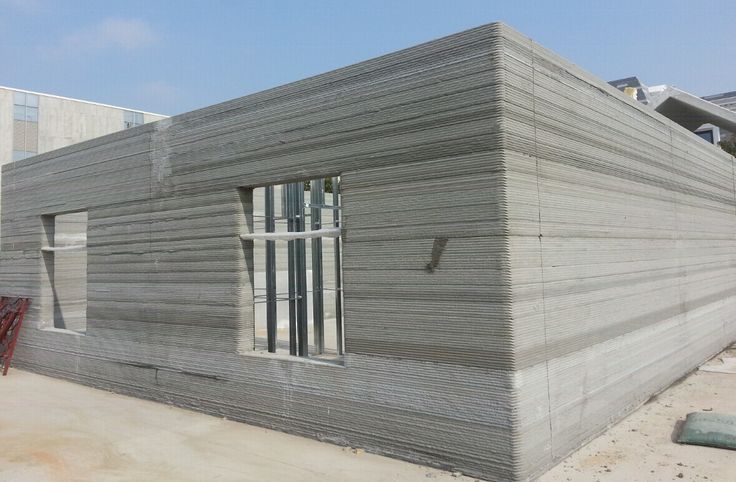 It demonstrates 3D printing in architecture.
It demonstrates 3D printing in architecture.
This structure was 3D printed with soil, lime, and rice fibers. The material was thoroughly blended in a wet pan mill to make it homogeneous and workable. For the extrusion, a Crane WASP 3D printer was used.
Finishing a monolithic wall using clay lamina. Then, linseed oil was applied and smoothed.
Do you want to leave in a 3D printed house?
Let us know in the comments below or on our Facebook page to let us know your ideas, and we would appreciate seeing pictures of your works of art! Sign up for our free weekly newsletter to receive all the latest 3D printing info in your email!
Let us know in the comments below or on our Facebook page to let us know your ideas, and we would appreciate seeing pictures of your works of art! Sign up for our free weekly newsletter to receive all the latest 3D printing info in your email!
MudBots 3D Concrete Printers - Print a House
Our printers come in a variety of sizes, from smaller 15'x15' up to 100'x50'
Shop Printers
Want to see how much you will save when 3D Printing a home versus traditional building? Check out our cost calculator.
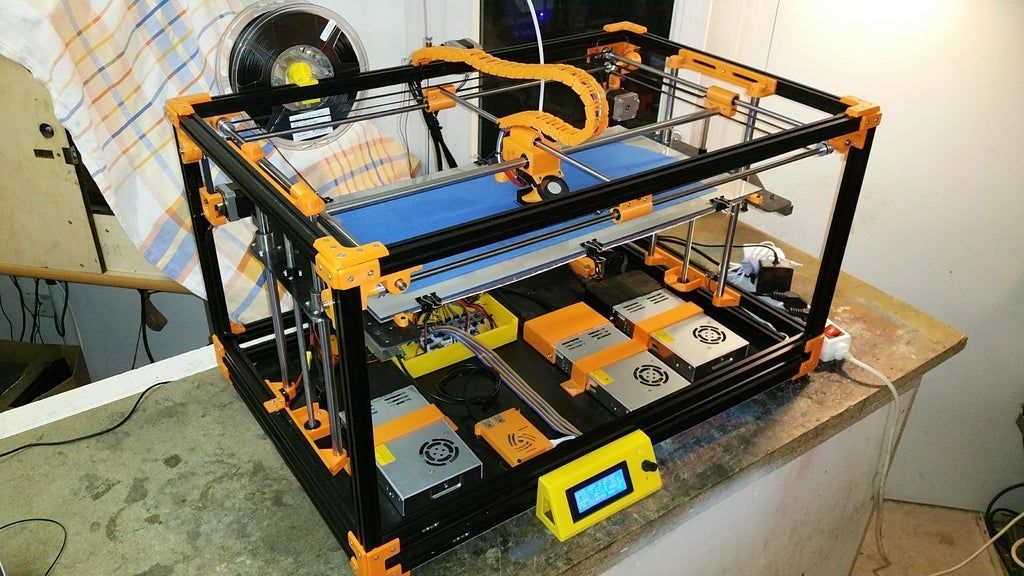
Cost Calculator
Marketable Designs
We’ve been told that if the printer wasn’t any faster and wasn’t any cheaper to build with, it would still be the most significant tool ever, because it allows architects everywhere to begin offering designs that were cost prohibitive in the past.
Consumers are tired of the costs associated with conceptual designs. Traditional construction is limiting without astronomical costs. Architects have the ideas, but most consumers aren’t willing to pay for them. With a printer the cost between boring and amazing is the same.
Industries
Want to build one? Call us.
3D Print Walls
Want to build one? Call us.
3D Print Fireplace
Want to build one? Call us.
3D Print Monument Letters
Want to build one? Call us.
3D Print Benches
Want to build one? Call us.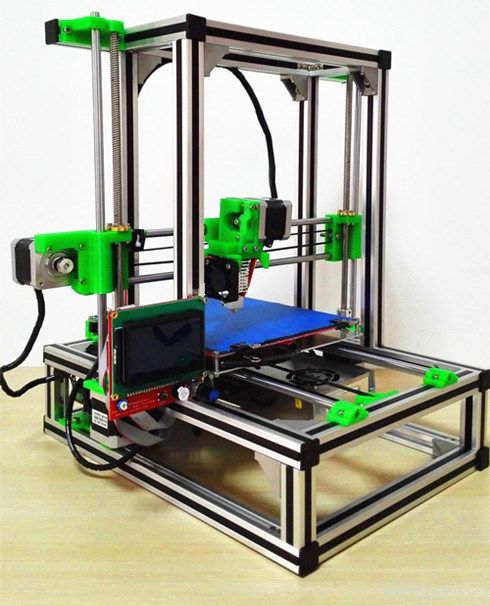
3D Print Fences and Walls
Want to build one? Call us.
3D Print Signs
Want to build one? Call us.
3D Print Monuments
Want to build one? Call us.
3D Print Fountains
Want to build one? Call us.
3D Print Retainer Blocks
Want to build one? Call us.
3d Print Monument and Waterfalls
Want to build one? Call us.
3D Print Planters
Want to build one? Call us.
3D Print Sheds
Want to build one? Call us.
3D Print Monument Boulders
Want to build one? Call us.
3D Print Drainage
Want to build one? Call us.
No More Forming
Want to build one? Call us.
3D Print Stairs
How 3DCP Works
1
Concrete Printing (3DCP) is possible with the construction of a large 3D printer capable of printing large scale structures, from spas and barbeques to homes and larger commercial buildings, without the need of traditional framing, forming or blocks.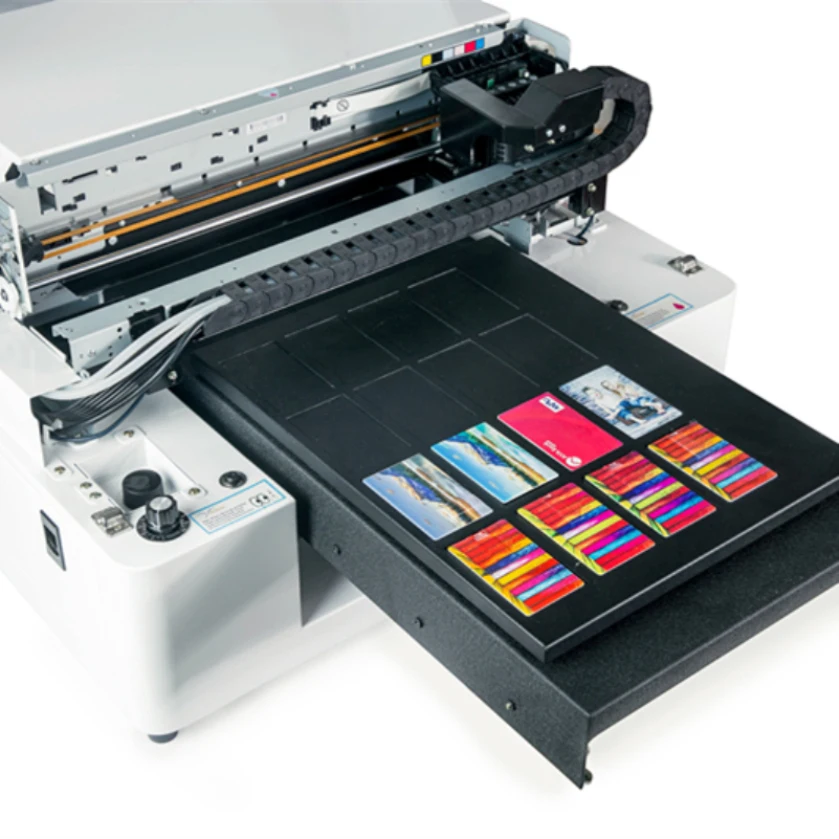 MudBots offers printers from 15' x 15' up to 100' x 100'.
MudBots offers printers from 15' x 15' up to 100' x 100'.
2
There are hundreds of different mix formulas that closely resemble a mortar type mix. Each mix requires months of testing for different characteristics, such as fluidity, bonding, water impenetrability, Seismic resistance, as well as curing and strength. Mixes are designed for 1200 PSI up to 10,000 PSI, depending on the structure and engineered objectives.
3
First step is to decide what you want to print.
4
The next step is to conceptualize a 2D design using a CAD program, and then converting the design to a 3D model using any 3D software that can export an STL file.
5
Once the 3D model is ready, the STL file is imported into a slicing software, where the height of each printed pass is specified.
After slicing the model into individual print passes, the system exports the code which is interpreted into actual nozzle movement.
6
Electrical boxes and plumbing are added during the print leaving perfect finish without gaps.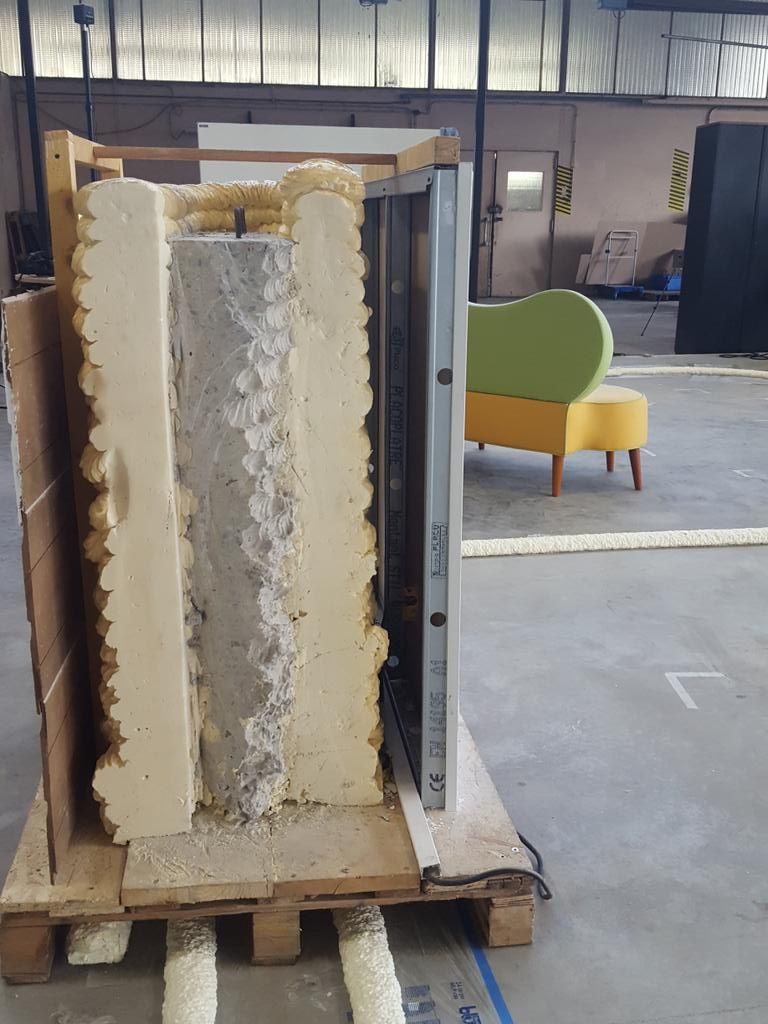
7
The mix is batched on site after which, the liquid ingredients are added to the dry mixes and mixed for delivery to a computer-controlled pump, which works in unison with the printer to control nozzle speed, and the volume rate of material at the nozzle.
8
After printing the walls, windows and doors are cut out while the print is still green, leaving perfect openings for window/door casings.
9
The key to printing without stopping every 12" as seen by the rest of the world, is utilizing a batch plant that meters all the dry and liquid ingredients as the temperature, wind and humidity change. the mix formula being used at 5am is not the mix being used an hour later. MudBots provides a variety of mix formulas with differing strengths and cure times without being forced to buy proprietary mixes and paying 5 times as much when everything needed is already available at local batch plants.
Process
Step 1
Three men assembly in 3 hours without any lifting devices or need for heavy footings
Step 2
Print layout for footings with spray nozzle attachment
Step 3
Move printer for escavators in just 10 minutes
Step 4
Print forms for footings and flatwork
Step 5
Print walls up to 10' without stopping
Step 6
Add electrical boxes, rebar, and trowel walls while printing
Understanding What We Do & Don't Do
Here's how you can save.
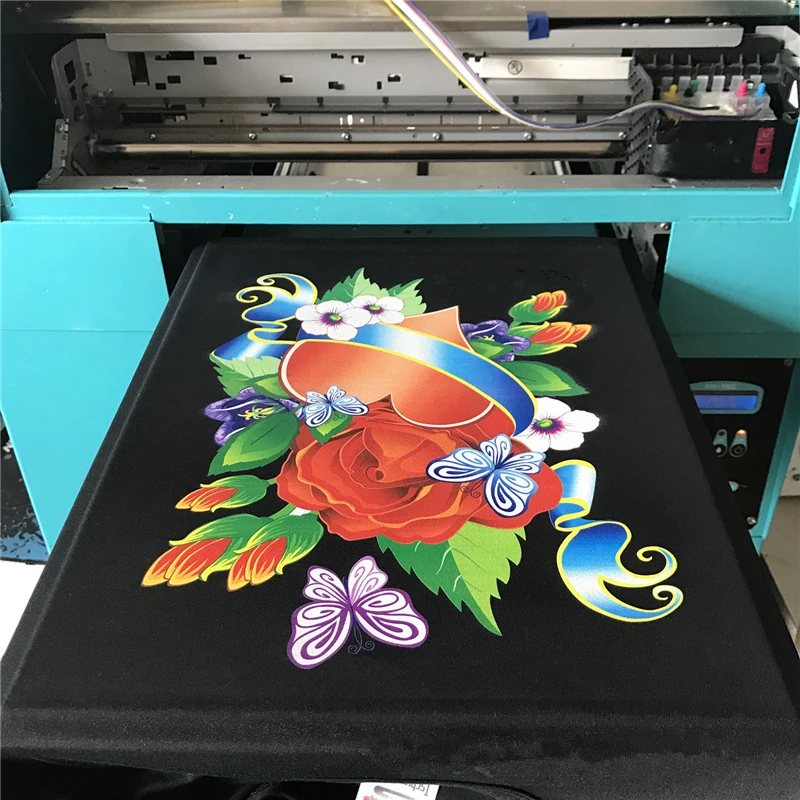
Layout for Footings Dig
The first cost savings will be the elimination of 3 men, string lines, and marking paint. Simply add the airless attachment to the nozzle of the printer, and your entire layout for footing is done in minutes. Push the printer out of the way and start digging.
(The printer is able to print forms for footings)
Footing Forming
The layout and forming for footings and stem walls are very time-consuming. It takes a lot of lumber, diesel, stakes, and labor that is no longer necessary. Simply level the area, compact them, level the four corners of your printer, and PRINT.
(Forms do not need to be stripped when printed)
Footing Stripping
Perfect level and square forms are printed right from the computer. Grading is also easier, as the only real important level is the 4 corners of the printer.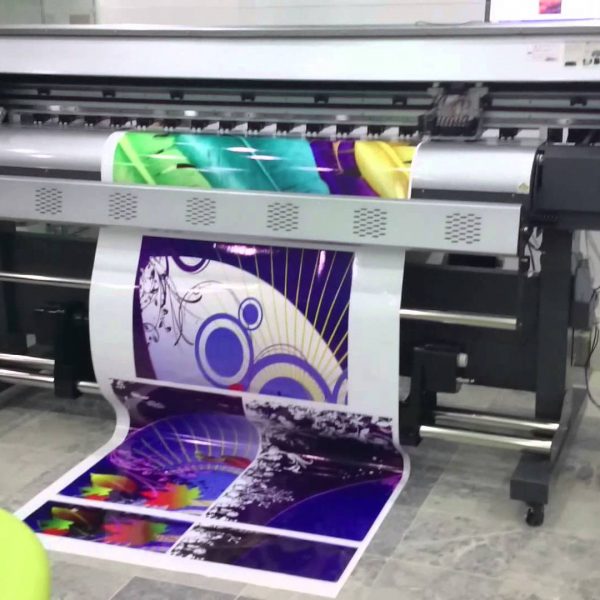 Printer can be set up for uneven grades.
Printer can be set up for uneven grades.
(The printer can print the forms for slab)
Slab Forming
The slab layout and forming is critical to all other subs on the job. If a mistake is made at this point of the project, nothing else is square, and all other subs suffer. With the Concrete Printers, the house is square every time.
Slab Finishing
Not there yet, but our concrete printer will be finishing slabs within the next 6 to 12 months, and can be ordered as an option. If you’re waiting for all the options to be available before buying, you’ll never buy a printer, because we will never stop innovating. All upgrades will be available and are designed to be added to all of our printers.
(We can print basements)
Basements
Our printers easily print basement walls without the need of forming, backfilling, stripping forms, forming interior walls, drywall, insulation or taping.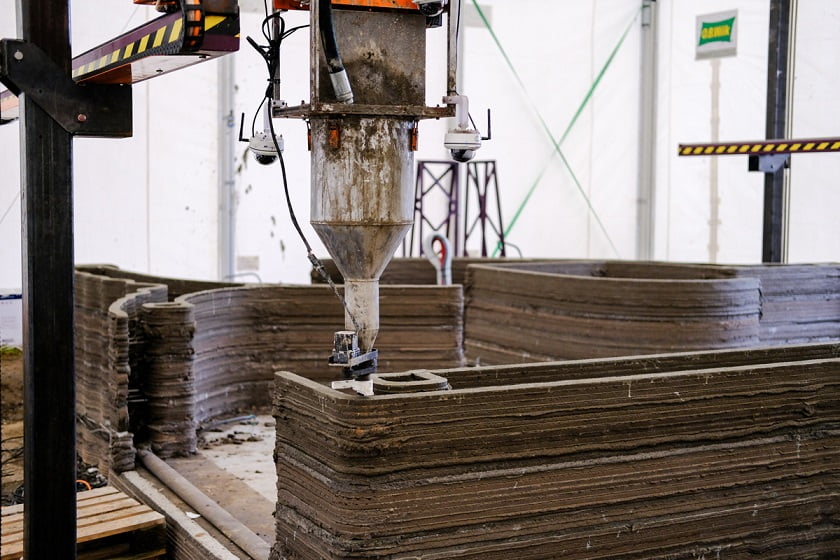 All of this is done by the printer.
All of this is done by the printer.
(There is no need for the labor or time to do layout on slab)
Framing Layout
The printer knows where your wall is going to be. No chalk lines needed. Once the slab is poured, all you have to do is hit print.
(No need for framing)
Framing
No warped studs, better fire rating, no mildew. No matter how you look at it, printing a home is far better than framing a home. Concrete printing is faster, more accurate, just better all around.
(No need to drill studs for electrical)
Rough Electrical
This is not necessary as walls can be printed that are hollow. Depending on the mix that is used, there is also no need for rebar or solid pour exterior and bearing walls. We know the idea of exterior walls and bearing walls without rebar seems ridiculous, but it's time to learn something new. Look up 20,000 PSI concrete and geopolymer. It's real.
Look up 20,000 PSI concrete and geopolymer. It's real.
(No need to drill studs for plumbing)
Rough Plumbing
This isn’t necessary as walls can be printed hollow. Same as above. Your electrical and plumbing will be less expensive.
(Printed walls are finished without additive material during the print)
Drywall
You will still need to hang the lid, but not the walls. This goes for the basement. Just trowel the printed wall and when done, it's as smooth as a 3-coat drywall. Most countries do not wood frame at all. They build with bricks and then send a crew of mason finishers, and when it’s done, it’s smooth as anything.
(No need for taping as the walls are troweled smooth during printing)
Taping
Some print finishes may not need to be finished if acceptable to the customer. Taping takes days for each coat to dry. This is not the case with mason finishing. Within 3 hours of the walls being printed, the walls are already finished.
Taping takes days for each coat to dry. This is not the case with mason finishing. Within 3 hours of the walls being printed, the walls are already finished.
Finishes
If builders want to finish the smooth walls with a knock down broquet, orange peel or other finish, just come back the next day and spray with a hopper, top coat and trowel.
(Exterior walls are finished during the print)
Stucco / Siding
No paper, mesh or additive material is needed. This isn't a process that is done days after framing and sheeting. The finish is done real time as the wall is printing.
(Printers can be purchased with an insulation attatchment)
Insulation
You can have any R Factor you want depending on the density and material. A solid concrete wall has an R9 Value. If you print a hollow wall and back fill with fiberglass, polystyrene or cellulose, you can achieve any R value you desire.
(Mudbots is working on a composite truss system that can be printed on site)
Trusses
Additionally, house plans can be modified to allow for dome roofing, which can also eliminate trussing and sheeting costs. The truss system utilizes the same printer, but with the use of a different mixer/pumping system. As new advances become available, they will be bolt-on solutions with your existing printer.
Underground
More and more customers are starting to experiment with additional uses. Underground is definitely something worth considering. The cost is high for underground but can be significantly reduced by printing on site.
Landscape and Hardscape
The 3D Concrete Printer is a landscaper’s dream. Never before could you have offered products at a fraction the cost of your competition while still earning profits. It is basically unheard of. Developers will rethink their offerings when they realize how affordable the little extras are.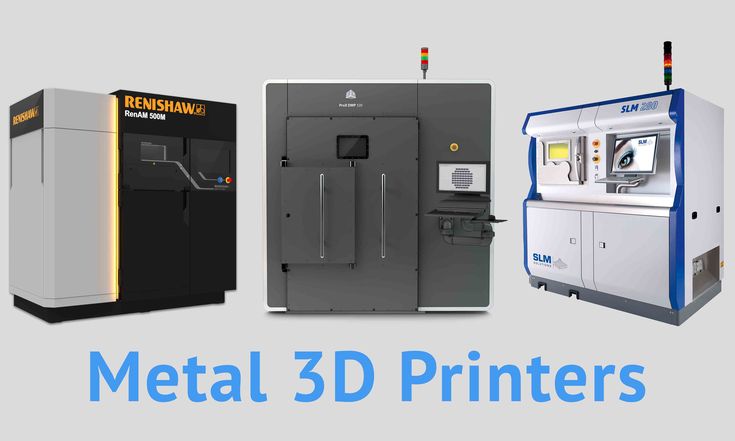 The extras will set them apart from all the others.
The extras will set them apart from all the others.
Pool and Spa
By now, you may be realizing how significantly concrete printing is about to change so many industries. Pool and spa is just another market that will benefit. The cost for traditional pool construction is about to change. Homes can be sold with included water features at a fractional cost.
Signage
Very seldom do we see breathtaking signage. Everyone is looking for ways to stand out, but it keeps getting back to budgets. Imagine the development entries that are possible now. These printers like to print and with everything they can do, it would be foolish to have any down time.
Registration is required to access our Cost Calculators. We provide online tools for calculating the cost for mix formulas and “side by side” project costs comparisons using 3D technology.
Apples Comparison Test New
Complete the worksheet to have a better idea of where you will save in terms of Materials and Labor.
Bag Cost
Use this worksheet to determine the Cubic Inch Cost of the ingredients that will be used in the specialty mix for printing.
Mix Formula
This is a necessary first step to determine the material cost of any mix formula.
3D Printing Costs
Use this calculator to estimate costs to build using concrete printing over traditional construction methods.
Will It Pass Code?
First time callers don’t have any problem recognizing that concrete printing would be far faster and cheaper. They also don’t question the feasibility of learning the tech. The single most asked question relates to passing code. No fear of the tech, just fear of their building department.
Truth is concrete printers are already building homes and commercial buildings all around the world, so when considering the application in your backyard, here are a few things to consider.
ICF Construction
The best way to wrap your head around concrete printing is to start with the basics, and there is no better way than to liken 3D Concrete Printing, or 3DCP, to Insulated Concrete Block construction. ICF code is accepted everywhere yet a foam block has virtually no structural strength at all. So when you are considering how you would pass code, keep ICF in mind. For the most part, a concrete printer is doing nothing more than printing a hollow wall shell that can be filled with rebar and concrete. The only difference is foam has no strength at all, compared to what we print in most cases, which is twice the strength of cinderblock.
CMU Construction
Now with that in mind, let's look at the similarities with CMU (Cinderblock). No one questions the ability to build with cinderblock. While we don’t encourage it, take into consideration the fact that you can print walls that are the exact dimension and design as cinderblock yet twice as much the strength, and without grouted joints that are susceptible to seismic cracking.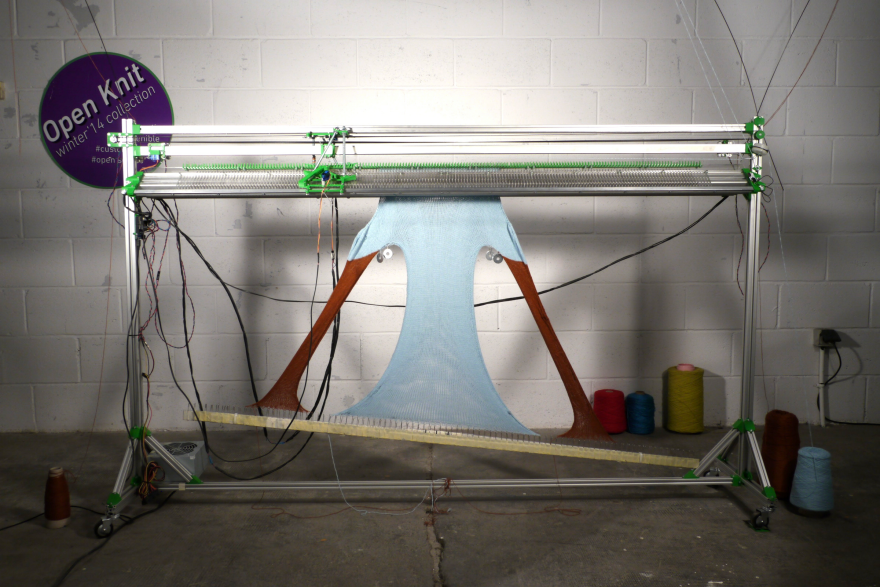
The advantage of concrete printing is the ability to print hollow walls which reduced costs for electrical, plumbing and insulation. Additionally, hollow walls can be insulated to almost an R factor with ease with the absence obstructive studs.
The challenge isn’t whether or not it's possible, as it's already being done everywhere. The challenge is whether or not you can find a structural engineer that makes it possible. It's all about math. The code already exists, all you have to do is exceed the code, and to do that, you need to start with the mix.
Testing and Math
We have developed and tested a myriad of different mixes with different characteristics, such as PSI, tensile strength, water impenetrability, fire resistance, as well as cold weather mixes, hot weather mixes, accelerated mixes, and retarded mixes. We provide the formulas and the lab results that your engineer will need to determine what the wall designs will be.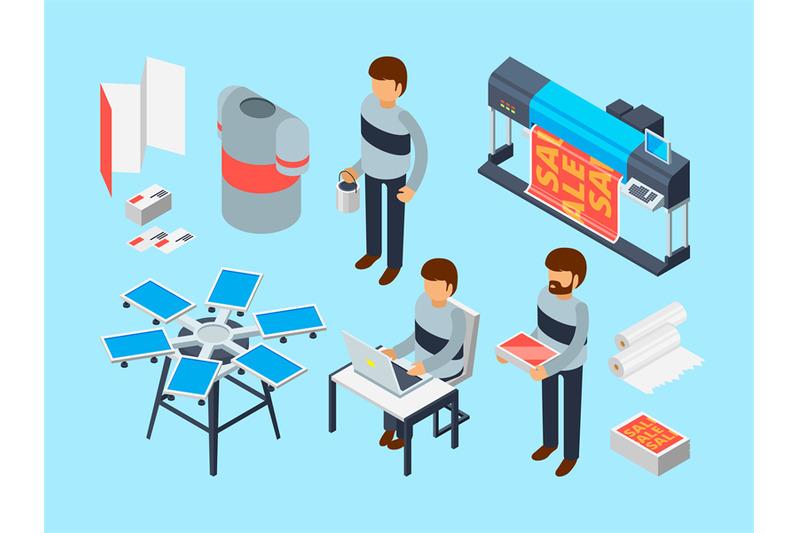 Once they have the testing results, they can design a wall that exceeds any code anywhere.
Once they have the testing results, they can design a wall that exceeds any code anywhere.
Some choose to stay close to traditional methods by printing walls that resemble ICF and CMU, but others, who have more confidence, take it all the way by utilizing stronger mixes, so that they can capitalize on ALL the cost-saving benefits.
Plans and Details
As for the other considerations, we have plenty of videos that address common questions about headers, attaching hurricane straps, installing electrical boxes, securing plumbing, mounting top plates for trussing and methods for tying the wall to the foundation. Although, most engineers want to see the methods being used by others first before reinventing the wheel, as they learn more and more until there isn’t a question that they can’t offer up to 4 or 5 solutions when asked. Most of this is common sense, nevertheless, we have the plan details and math to share.
As we’re saying this, bear in mind that every state, and sometimes even cities, have different building codes. What we will share is determined by specific code and conditions that are not specific to your state. Far too many factors come into play, such as mix characteristics, code, water table, frost level, annual snow loads, wind, seismic, soil compaction for starters. We do not provide structural engineering, but we can point you in the right direction.
What we will share is determined by specific code and conditions that are not specific to your state. Far too many factors come into play, such as mix characteristics, code, water table, frost level, annual snow loads, wind, seismic, soil compaction for starters. We do not provide structural engineering, but we can point you in the right direction.
Deal Breakers?
Everyone who is considering the use of concrete printing has a lot of work to do before they can commit to a purchase. There is no shortcut. The investment of time is inevitable. As you start down the path to making a decision, it’s easy to get confused as to what’s most important, and where you should spend your time, but as you consider the options presented to you, there will be some paths that obviously are a waste of time. Everyone needs to know what their deal breakers are. They will be different for each person, but from speaking with others, we have a pretty good idea of what most consider their deal breakers.
Design
From the onset, our engineers understood the importance of creating a design that had all the same features but was also easily understood. A printer that is lightweight and easily assembled in the field. MudBots printers weigh 75% less than any printers in the industry, with an assembly time that is 80% faster. This is a printer that does it all, does it faster, and is half the price of anyone.
Basements and Second Story
In some parts of the world, the ability to print basements and a second story isn’t a big deal, but in North America, it’s essential. Look around and you will find that most printers in this marketplace don’t have the ability to do either without tremendous unnecessary excavation or back filling. If you’re going to invest in a printer, most agree that the ability to quickly set up for footings, basements and second story is a must.
Assembly
Look at any other printer and you will recognize right off that assembly is going to be an expensive challenge. Imagine the worst IKEA assembly ever. That’s about what you get. Think about parts that are heavy to manage without forklifts and cranes, imagine hundreds of nuts and bolts. In some cases, needles cosmetic plastics that serve no function, waste hours of assembly, and will undoubtedly be broken and expensive to replace. Most printer designs make sense to the engineers that built them, but not so much to the contractors that will need to assemble it in the field. A 20' x 20' MudBots printer can be assembled with 2 workers in two hours without any mechanical lifting. MudBots can also be moved from one lot to another without disassembly by simply adding wheels. Additionally, the printer can print entire structures without being moved multiple times.
Imagine the worst IKEA assembly ever. That’s about what you get. Think about parts that are heavy to manage without forklifts and cranes, imagine hundreds of nuts and bolts. In some cases, needles cosmetic plastics that serve no function, waste hours of assembly, and will undoubtedly be broken and expensive to replace. Most printer designs make sense to the engineers that built them, but not so much to the contractors that will need to assemble it in the field. A 20' x 20' MudBots printer can be assembled with 2 workers in two hours without any mechanical lifting. MudBots can also be moved from one lot to another without disassembly by simply adding wheels. Additionally, the printer can print entire structures without being moved multiple times.
Proprietary Mixes
If you think your printer cartridges are expensive, wait until you have to buy and ship proprietary concrete mixes from halfway around the world or even the USA. MudBots is the only ones that provide the mix formulas for your printer and allow you to use any mix without voiding your warranty.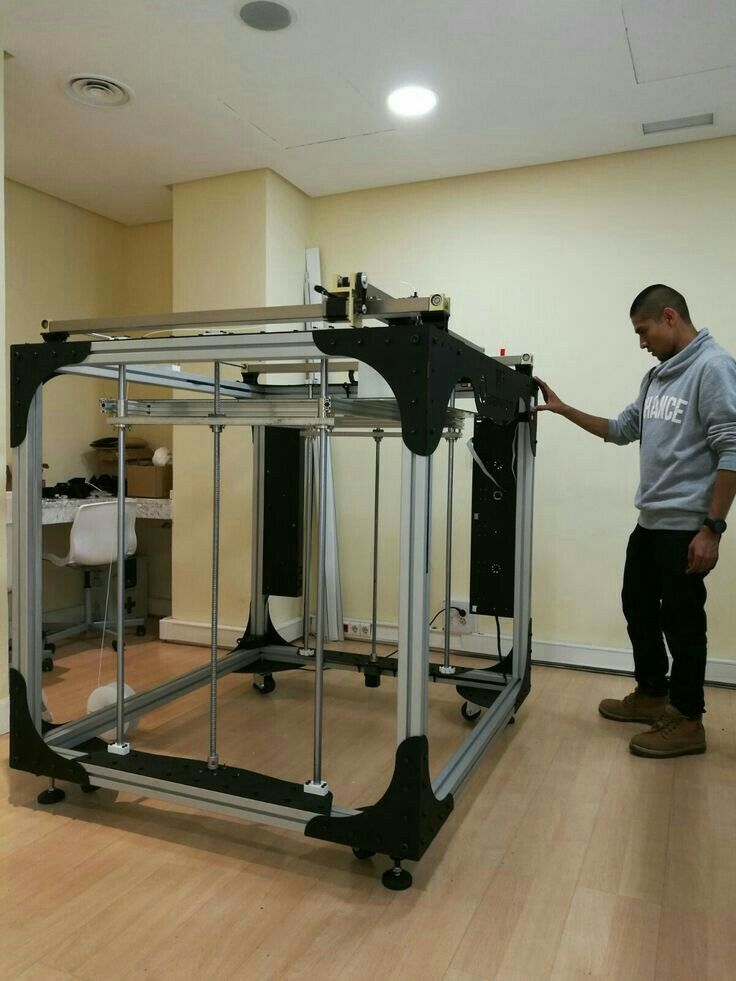 This should be a deal breaker for everyone as they begin to realize what they will be paying for are mixes that are (mostly) available at their local hardware store, not to mention the cost of and any delay in shipping.
This should be a deal breaker for everyone as they begin to realize what they will be paying for are mixes that are (mostly) available at their local hardware store, not to mention the cost of and any delay in shipping.
Customer Service
Does it feel like the others are sleeping on the job? There is far more to consider when thinking who to buy from than a few online videos and website. This is a significant purchase for most, but as you're out knocking on doors, the one thing you should consider the most is customer service. Start calling around and you’ll discover that there’s no one to talk to. Phone numbers are hidden, and emails go unanswered for weeks. You have to ask yourself, if no one will talk to you now when you have the money on hand, what’s it going to be like when you need support.
Price
If you’ve been lucky enough to get this far with anyone, the first thing you will find is that MudBots isn’t just a little better in price.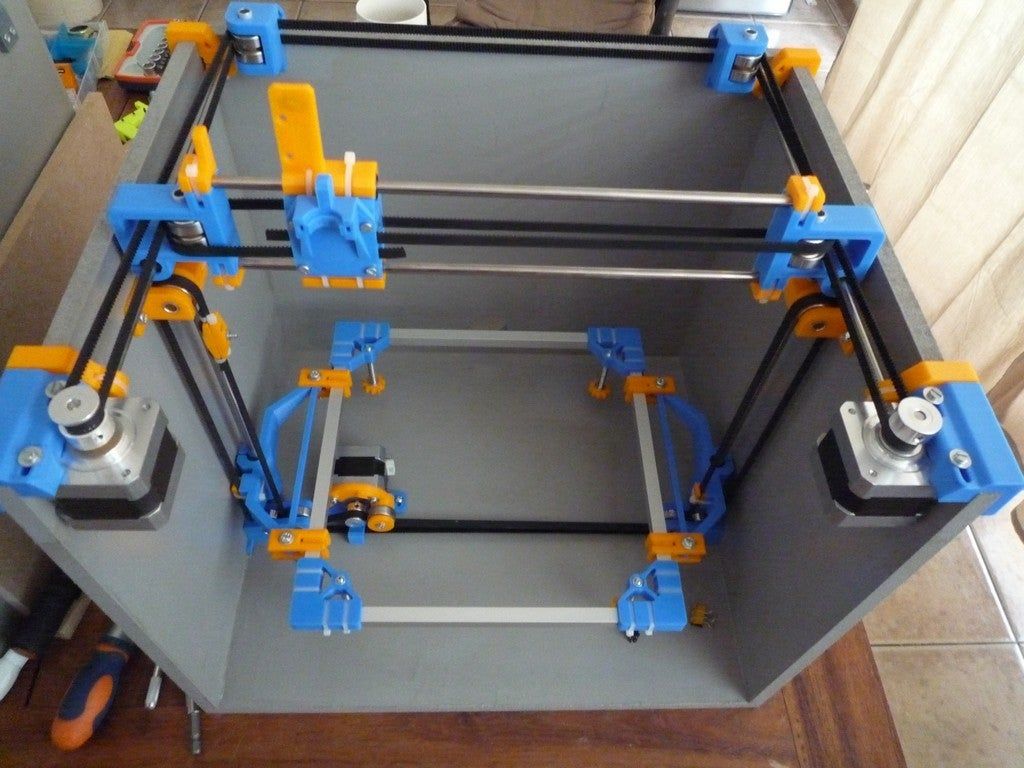 MudBots is 1/2 to 1/3 the price of other printers, with more features and options than anyone. Price is always a factor, as well as ROI. Do the numbers and you’ll find that within 60 days, you’ll have already paid for your printer in savings, and likely will be looking for your second purchase because of the advantages.
MudBots is 1/2 to 1/3 the price of other printers, with more features and options than anyone. Price is always a factor, as well as ROI. Do the numbers and you’ll find that within 60 days, you’ll have already paid for your printer in savings, and likely will be looking for your second purchase because of the advantages.
Franchise
Most of our customers contact us because they are excited about the income possibilities that our printers will offer them, but for this very reason, the greater opportunity is in securing the exclusive distribution rights for their state. By merely owning and using our printers, our customers will undoubtedly generate tremendous excitement as they begin printing unbelievable designs at a third the cost and a third the time. It would be impossible to keep such a tool a secret. As news of this innovation begins making its way to the public, demand will become unimaginable. Since our customers are creating the exposure and excitement, it’s only right that they share in the success and residual income opportunity.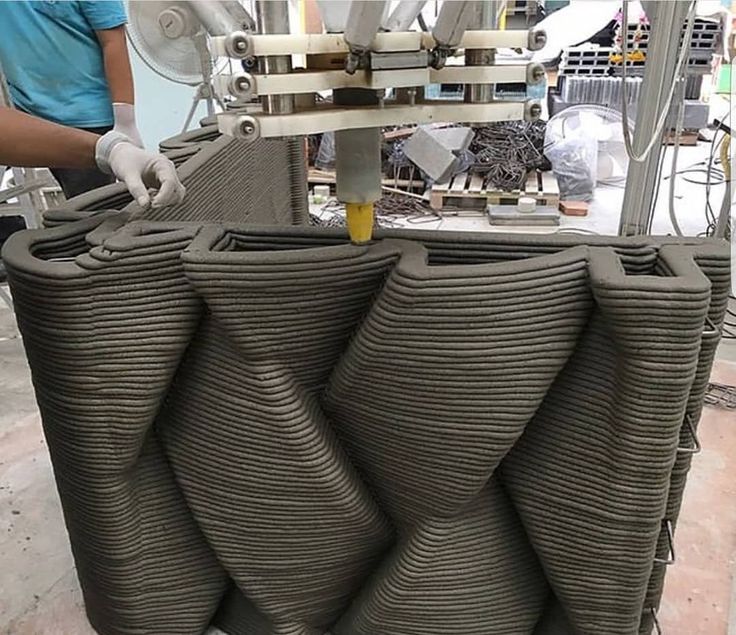
Jurisdiction
Most contracts start off with optimism and the best intentions, but if you’ve been doing this a while, you have learned that in the event of any legal actions, jurisdiction is an issue. If you’ve ever had to litigate outside your state, you recognize the challenges, but litigating outside the country is altogether different. We take a lot for granted in America, but that is not the case intentionally. Imagine trying to hire legal counsel abroad and trying to interpret international laws. This does not certainly offer home court advantage, and asking anyone who has tried, you’ll see that this is problematic at best. But even if you prevail, collecting on a judgement with corporate assets abroad is nearly impossible.
RegionalMaster Dealer
We thought so!
Want more time with your family?
Want to earn over 100K a month?
Want to have your own company?
MudBots is looking for the best. If you have a background in construction, love new technology, and especially love business in general, you're in the right place. MudBots has developed the first line of 3D Concrete Printers available to the world. Media everywhere is saying that the new technology will change the construction industry forever. Seldom do opportunities come along with the huge market interest and untapped market. This is what business opportunist dream of.
If you have a background in construction, love new technology, and especially love business in general, you're in the right place. MudBots has developed the first line of 3D Concrete Printers available to the world. Media everywhere is saying that the new technology will change the construction industry forever. Seldom do opportunities come along with the huge market interest and untapped market. This is what business opportunist dream of.
Quality of Life
Success is measured in many ways, but true success is measured by the peace a person feels when they know they are doing something they love, their efforts are rewarded with increased gain, and they have the time to enjoy both with the ones they love. There are countless ways to make a living, but if you don’t enjoy what you’re doing or you don’t have the time to enjoy anything else, it’s hard to be satisfied. MudBots Master Dealers enjoy all three. They earn a remarkable living, they have the freedom to work when they want and because of their success, they get to focus on the more important things in life – their Family.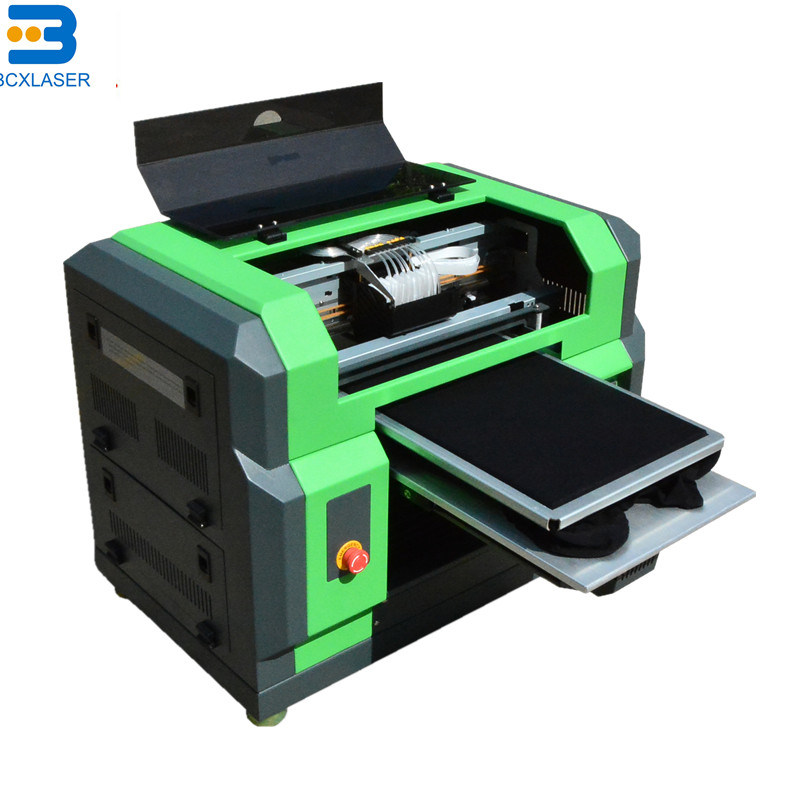
Job Description
The only way to manage a company that is growing as fast as MudBots is to have qualified individuals in every region of the country who can demonstrate products and serve their dealers. The Master Dealer program gives the company and its dealers the representation needed while offering a significant opportunity to those who embrace the call.
Exclusive Region
As an RMD, you will be given an exclusive license to represent and profit off of ALL the MudBots sales in your state/region. It is generally a full state, but in larger markets, a state may be divided to provide for better reachability and service.
Residual Income
There are many ways to profit as an RMD but the “residual commission” is by far the most enticing. Sell it once and continue earning for years to come. As an RMD you will earn up to 10% on every printer sold. With printers ranging from 284k to 1.3 million, it’s not hard to see how lucrative the venture can be.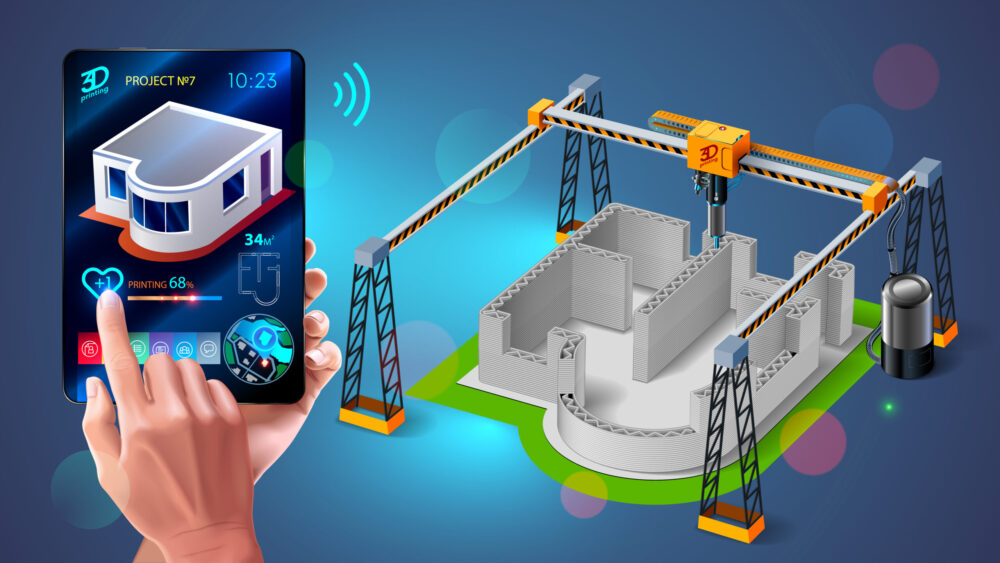 If RMDs sign up one new dealer every month who sells one printer a month within 12 months, depending on the profit sharing each RMD sets up with their dealers, earning after 12 months of work with 12 compliant dealers should be well over 100k a month. Why so much? Quite simply, we want to attract the best in the industry. An organization is only as good as its people. We want professionals, self-motivated individuals who are passionate about building their own business along ours.
If RMDs sign up one new dealer every month who sells one printer a month within 12 months, depending on the profit sharing each RMD sets up with their dealers, earning after 12 months of work with 12 compliant dealers should be well over 100k a month. Why so much? Quite simply, we want to attract the best in the industry. An organization is only as good as its people. We want professionals, self-motivated individuals who are passionate about building their own business along ours.
Economy
One of the best thing about concrete printers is the recession-proof nature of products. If the economy slows, the need for faster and more affordable construction methods increases. Those trying to compete with traditional construction methods will quickly discover they can’t even come close, resulting in even more demand for MudBots products. Prospects can get on board now or wait until they are losing contracts without one.
Previous Next
Minimum Requirements
Training
Attend a 4-week training in Utah
Printers
Purchase two (2) demo printers equaling 500k or more
Truck
Must have a late model truck
Trailer
Must have an enclosed branded trailer
Demo Product
Demo product to 2 dealers each week
1 Dealer / Month
Sign one dealer each month
Work or Fun
The best thing about a career with MudBots is that it’s just plain fun.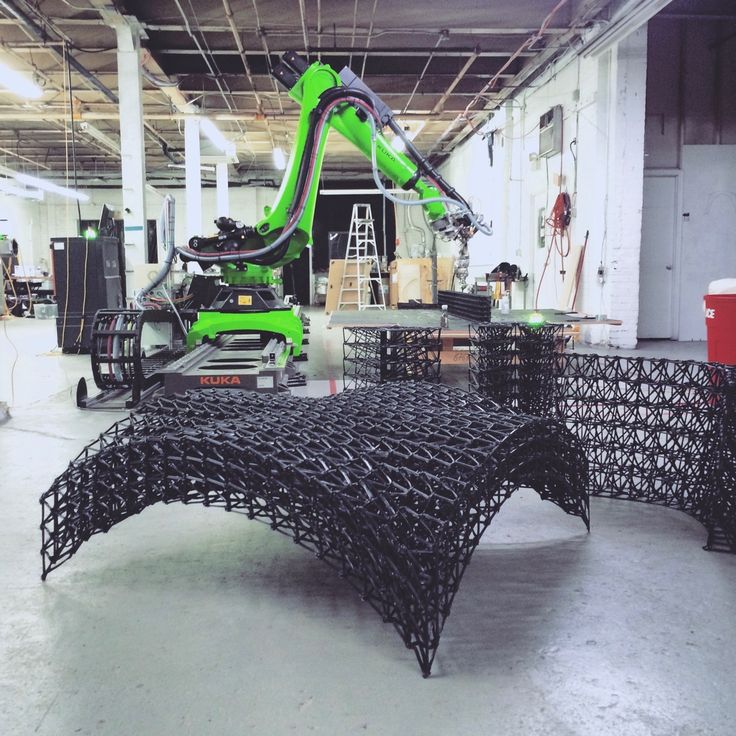 As more and more ways are discovered for utilizing 3D Concrete Printers, every day is an exciting adventure. It’s fun to make money doing what you love and this is definitely an exciting product that sells itself. Industry professional everywhere are in awe when they see products being printed without the need of straight lines and forms. This is a product that people will watch for hours in amazement. The longer they watch, the more they realize how valuable 3D Printing will be to their business.
As more and more ways are discovered for utilizing 3D Concrete Printers, every day is an exciting adventure. It’s fun to make money doing what you love and this is definitely an exciting product that sells itself. Industry professional everywhere are in awe when they see products being printed without the need of straight lines and forms. This is a product that people will watch for hours in amazement. The longer they watch, the more they realize how valuable 3D Printing will be to their business.
Getting Started
To get started, call and request an NDA and RMD application. Once accepted, you may attend the next RMD training where you will spend three full days of training and Q&A. You will learn about the industry, the opportunity, printer operation, specific mixes, lab testing, structure engineering, potential markets & marketing strategies. By the time you return home, you will be confident in your ability to promote and service the dealers in your area.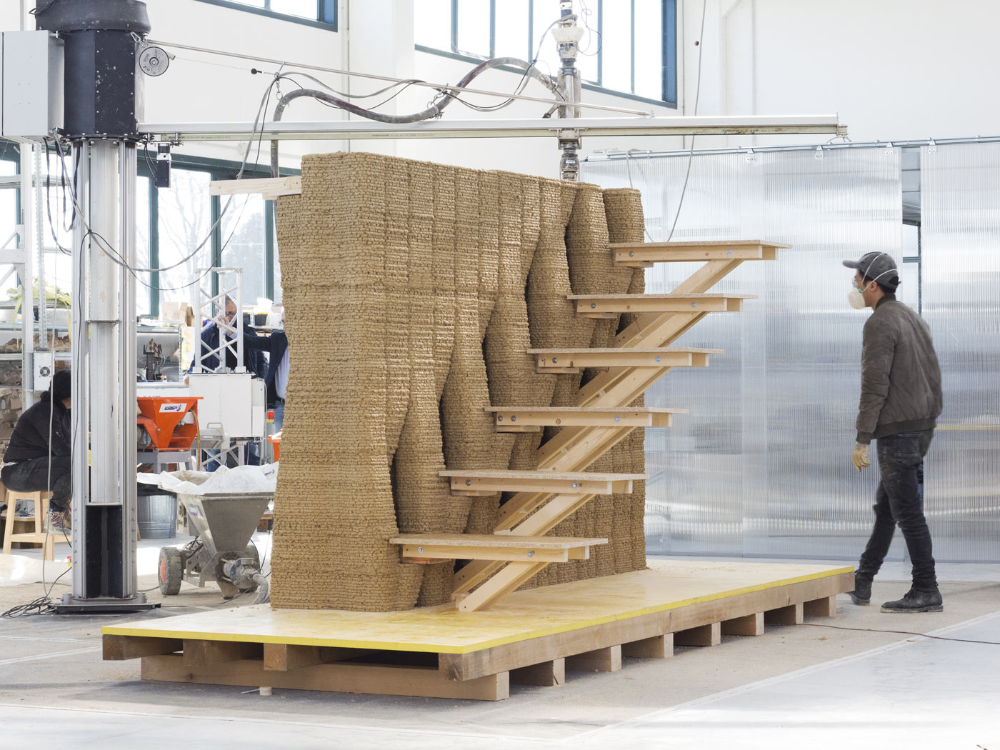
Welcome to MudBots.
Connect The Dots
As companies begin down this road the process and solutions for building with 3DCP’s can seem daunting at first but it doesn’t take much looking around to realize that answers and solutions are not far away. Here are some videos that will help with connecting those dots.
Fiber Cement Siding to Block
Hardy Plank over Block
Hardy Plank Siding on Block
Architectural Foam Accents
Applying Architectural Foam Accents
Spraying Finish on Artictectural Foam & Finishes (1/2)
Spraying Finish on Artictectural Foam & Finishes (2/2)
Cement Screws and Fasteners
Cement Board Screws
Faux Concrete Wall Panels
Wall Cladding Systems
Concrete Counter Tops 1
Concrete Counter Tops 2
How To Layout like a PRO - NOT NEEDED ANYMORE
Engineering Footings
Soil and Footings
Tiny Home Village - Making a Difference
Affordable Housing in Detroit
Spec Mix Delivery
Site Tools and Methods
Desktop 3D printers for the home
Anet Anycubic Creality3D CreatBot Dremel Elegoo Felix FlashForge FLSUN Flying Bear Formlabs IBRIDGER imprinta MakerBot Mingda Peopoly Phrozen PICASO 3D QIDI Raise3D Tiertime Ultimaker Uniz Voxelab wanhao XYZPrinting ZENIT Zortrax
Availability
In stock
Manufacturer
Phrozen Raise3D Creality wanhao FlashForge
PICASO 3D Anycubic Formlabs Tiertime Flyingbear QIDI Uniz CreatBot Dremel DigiLab Felix Zortrax XYZprinting Ultimaker imprinta Elegoo MakerBot Anet FLSUN iBridger MINGDA Peopoly snapmaker Voltera Voxelab ZENIT
Delivery
Assembled printer Assembly kit
Application
Architecture For large objects For beginners Medicine Education
Orthopedics Production prototyping Reverse engineering Advertising, exhibitions Sculpture Dentistry Hobby jewelry
Print technology
DLP/LCD/SLA FDM/FFF LFS
Thread diameter
1. 75 mm 2.85 mm 3.00 mm
75 mm 2.85 mm 3.00 mm
Material type
ABS PLA PETG Photopolymers Flex
Nylon (Nylon) ASA Carbon HIPS PC PEEK PP TPU other Metal (Ultrafuse 316L, Ultrafuse 17-4PH)
Number of extruders (print heads)
Heating table
Yes No
Wi-Fi or other wireless network
Yes No
Country of origin
China Russia USA Taiwan Hong Kong
Netherlands Poland
Add to compare
Product added to compare Go
| Manufacturer | Creality |
| Construction area size | 220x220x250 mm |
| Number of extruders (print heads) | 1 |
| Country of origin | China |
Add to compare
Product added to compare Go
| Manufacturer | Creality |
| Construction area size | 220 x 220 x 250 mm |
| Number of extruders (print heads) | 1 |
Free Shipping
Add to compare
Product added to compare Go
| Manufacturer | Creality |
| Construction area size | 200x200x200 mm |
| Number of extruders (print heads) | 1 |
| Country of origin | China |
Free Shipping
Add to compare
Product added to compare Go
| Manufacturer | Anycubic |
| Construction area size | 102x57x165 mm |
| Country of origin | China |
Free Shipping
Add to compare
Product added to compare Go
| Manufacturer | Anycubic |
| Construction area size | 197 x 122 x 245 mm (5.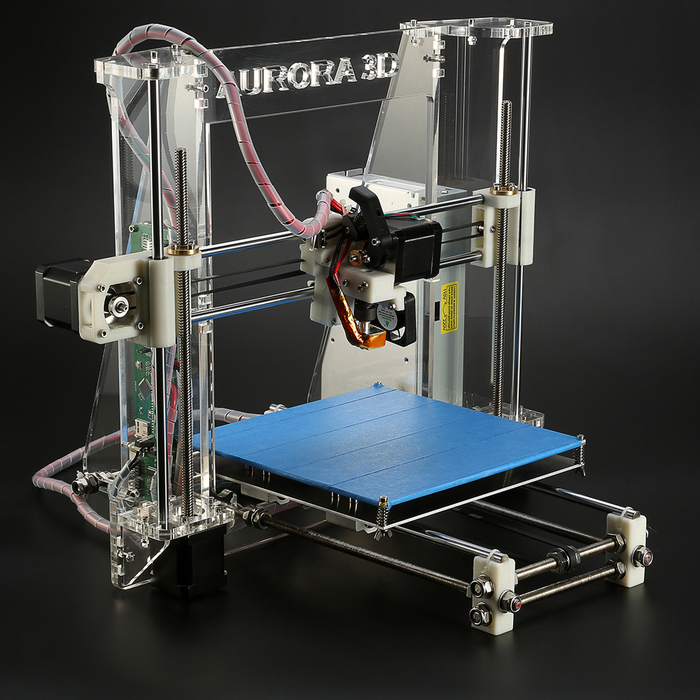 9 l) 9 l) |
| Chamber volume | 5.9 l |
| Country of origin | China |
Free Shipping
Add to compare
Product added to compare Go
| Manufacturer | Creality |
| Construction area size | 250x250x400 mm |
| Number of extruders (print heads) | 1 |
| Country of origin | China |
Add to compare
Product added to compare Go
| Manufacturer | FLSUN |
| On order/Transit | Goods in transit |
| Construction area size | 260 x 330 mm (D x H) |
| Number of extruders (print heads) | 1 |
| Country of origin | China |
Free Shipping
Add to compare
Product added to compare Go
| Manufacturer | Phrozen |
| Construction area size | 165x72x180 mm |
| Country of origin | Taiwan |
Free Shipping
Add to compare
Product added to compare Go
| Manufacturer | Anycubic |
| Construction area size | 219 x 123 x 250 mm (6. 7 l) 7 l) |
| Country of origin | China |
Free Shipping
Add to compare
Product added to compare Go
| Manufacturer | Flash Forge |
| Construction area size | 200x148x150 mm |
| Number of extruders (print heads) | 2 |
| Country of origin | China |
Free Shipping
Add to compare
Product added to compare Go
| Manufacturer | QIDI |
| On order/Transit | Goods in transit |
| Construction area size | 270 x 200 x 200 mm |
| Number of extruders (print heads) | 1 |
| Country of origin | China |
Add to compare
Product added to compare Go
| Manufacturer | Flyingbear |
| Construction area size | 325*325*350 mm |
| Number of extruders (print heads) | 1 |
| Country of origin | China |
Add to compare
Product added to compare Go
| Manufacturer | FLSUN |
| On order/Transit | Goods in transit |
| Construction area size | 300x410 mm (diameter x height) |
| Number of extruders (print heads) | 1 |
| Country of origin | China |
Add to compare
Product added to compare Go
| Manufacturer | Phrozen |
| Construction area size | 218 x 123 x 235 mm |
| Country of origin | Taiwan |
Free Shipping
Add to compare
Product added to compare Go
| Manufacturer | QIDI |
| Construction area size | 300 x 250 x 300 mm |
| Number of extruders (print heads) | 1 |
| Country of origin | China |
Free Shipping
Add to compare
Product added to compare Go
| Manufacturer | Anycubic |
| Construction area size | 300x298 x 164 mm (print volume 14.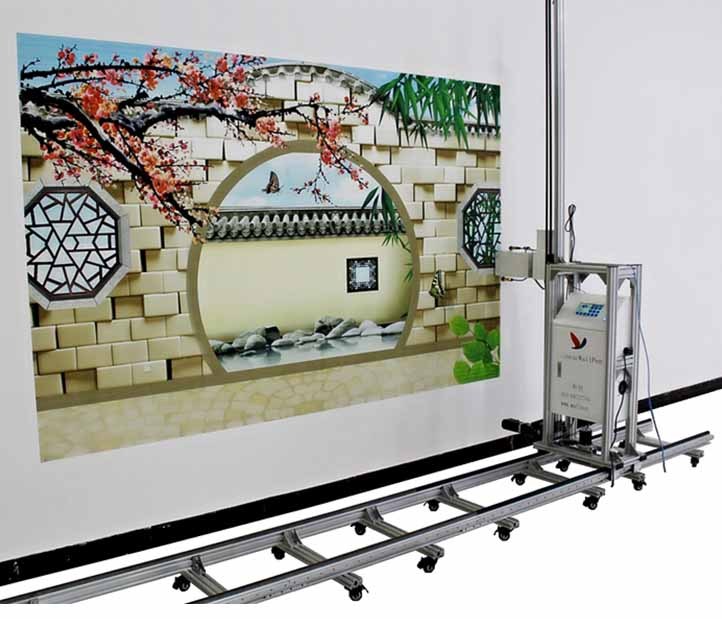 7 l) 7 l) |
| Country of origin | China |
3D printing is one of the most promising areas of technological development in the 21st century. Having gone a long way from bulky and heavy boxes to compact desktop devices, 3D printers have ceased to be something inaccessible to a wide range of users. The era of mass additive manufacturing has already arrived, and every home can now house a real desktop factory.
You can buy a 3D printer capable of printing small models and prototyping of medium complexity today at the price of an entry-level laptop. The price of PLA or ABS plastic, which acts as a consumable, also no longer seems exorbitant. In a word, if you have long dreamed of getting to know the world of 3D printing and joining the ranks of makers, the right moment has come!
To save you time and make it easier to select equipment, we have collected in one section all desktop 3D printers optimized for home and office use. These are the real "workhorses" with the perfect balance of functionality, quality and price. Even a beginner can understand the settings, mount and calibrate a 3D printer, and as he gains experience, he will be able to print more and more complex three-dimensional models.
These are the real "workhorses" with the perfect balance of functionality, quality and price. Even a beginner can understand the settings, mount and calibrate a 3D printer, and as he gains experience, he will be able to print more and more complex three-dimensional models.
Anycubic desktop 3D printers - catalog of equipment for 3D printing in Moscow
Availability
In stock
Manufacturer
Anycubic
Delivery
Assembled printer Assembly kit
Application
For large objects For beginners Medicine Education Production
prototyping Reverse engineering Advertising, exhibitions Dentistry Hobby jewelry
Print technology
DLP/LCD/SLA FDM/FFF
Thread diameter
1.75 mm
Material type
ABS PLA PETG Photopolymers Flex
HIPS TPU other
Number of extruders (print heads)
Heating table
Yes No
Wi-Fi or other wireless network
Yes No
Country of origin
Free Shipping
Add to compare
Product added to compare Go
| Manufacturer | Anycubic |
| Construction area size | 102x57x165 mm |
| Country of origin | China |
Free Shipping
Add to compare
Product added to compare Go
| Manufacturer | Anycubic |
| Construction area size | 197 x 122 x 245 mm (5. 9 l) 9 l) |
| Chamber volume | 5.9 l |
| Country of origin | China |
Free Shipping
Add to compare
Product added to compare Go
| Manufacturer | Anycubic |
| Construction area size | 219 x 123 x 250 mm (6.7 l) |
| Country of origin | China |
Free Shipping
Add to compare
Product added to compare Go
| Manufacturer | Anycubic |
| Construction area size | 300 x 298 x 164 mm (print volume 14.7 l) |
| Country of origin | China |
Free shipping
Add to compare
Item added to compare Go
| Manufacturer | Anycubic |
| Construction area size | 20*19.6*12.2 mm |
| Country of origin | China |
Free Shipping
Add to Compare
Product added to comparison Go
| Manufacturer | Anycubic |
| Construction area size | 130x80x165 mm |
| Country of origin | China |
Free Shipping
Add to compare
Product added to compare Go
| Manufacturer | Anycubic |
| Construction area size | 210 x 210 x 205 mm |
| Number of extruders (print heads) | 1 |
| Country of origin | China |
Free Shipping
Add to compare
Product added to compare Go
| Manufacturer | Anycubic |
| Construction area size | 220x220x250 mm |
| Number of extruders (print heads) | 1 |
| Country of origin | China |
Add to compare
Product added to compare Go
| Manufacturer | Anycubic |
| Construction area size | 220x220x250 mm |
| Number of extruders (print heads) | 1 |
| Country of origin | China |
Add to compare
Product added to compare Go
| Manufacturer | Anycubic |
| Construction area size | 210 x 210 x 205 mm |
| Number of extruders (print heads) | 1 |
Free Shipping
Add to compare
Product added to compare Go
| Manufacturer | Anycubic |
| Construction area size | 165x132x80 mm |
| Country of origin | China |
Free Shipping
Add to compare
Product added to compare Go
| Manufacturer | Anycubic |
| Construction area size | 180 x 163 x 102 mm |
| Country of origin | China |
Free Shipping
Add to compare
Product added to compare Go
| Manufacturer | Anycubic |
| Construction area size | 220 x 220 x 250 mm (capacity 12. 10 l) 10 l) |
| Number of extruders (print heads) | 1 |
| Country of origin | China |
Free Shipping
Add to compare
Product added to compare Go
| Manufacturer | Anycubic |
| Construction area size | 130x78x160 mm |
| Country of origin | China |
Add to compare
Product added to compare Go
| Manufacturer | Anycubic |
| Construction area size | 245×245×260 mm |
| Number of extruders (print heads) | 1 |
| Country of origin | China |
Free Shipping
Add to compare
Product added to compare Go
| Manufacturer | Anycubic |
| Construction area size | 210×210×205 mm |
| Number of extruders (print heads) | 1 |
| Country of origin | China |
Thanks to the balanced combination of price and quality, desktop 3D printers from Anycubic quickly gained popularity in the maker community. Timely updating of the product line allows the company to quickly fix the shortcomings of previous models and improve functionality based on the feedback received from users.
Timely updating of the product line allows the company to quickly fix the shortcomings of previous models and improve functionality based on the feedback received from users.
In 2017, Anycubic was awarded three prestigious awards as one of the most innovative and fastest growing companies. Since then, it has repeatedly confirmed its status by releasing new models of desktop 3D printers that can boast excellent functionality, well-thought-out design and high-quality software. Separately, I would like to note the high level of customer support: consulting is carried out very quickly both in the form of letters and online.
Direct supply from the manufacturer
Our company is the official distributor of leading manufacturers of desktop and industrial 3D equipment (3D printers, 3D scanners, 3D manipulators) - Raise3D, FlashForge, Anycubic, Formlabs, Creality3D, PICASO 3D, Phrozen, Wanhao, CreatBot, QIDI, etc.
Own warranty service
We provide professional services for the selection, configuration, training, warranty and post-warranty maintenance of 3D equipment.